June 2019 - ORCHIDS
Early Purple orchids are woodland plants which should be in flower by late April. A rival for the earliest orchid to flower is the Early Spider orchid which can be found in large numbers at Samphire Hoe near Dover where the spoil from the digging of the Channel Tunnel was dumped. Pyramidal orchids are relatively common grassland plants, as are Common Spotted orchids, both occasionally making a sudden appearance in gardens possibly from the dust-fine seed blown in from another site. As all orchids need the help of an underground fungus to enable them to grow most seed does not succeed in producing a plant but the vast quantity of seed released does at least give them a chance.
In favoured places many species can appear – one such local place is Farthing Downs where a grassy slope within the woodland can produce Fragrant, Fly, Bee, Man, Twayblade and possibly other species. Marden Meadow in Kent has a field covered in Green-winged orchids. In Lullingstone Country Park in the middle of a golf course there is a bank on which grow Fragrant and Lizard orchids (and this bank also has a colony of Dark Green Fritillary butterflies).
Further afield other Kent wildlife reserves produce Lady orchid, Monkey orchid, Burnt orchid, Greater Butterfly & Lesser Butterfly orchids. On Box Hill can be found Musk orchid, Frog orchid, Autumn Lady’s-tresses and Bee orchid.
In High Elms in Bromley there is a bank in the middle of the woodland where Bee orchid, Greater Butterfly orchid, Fly orchid and White Helleborine can be found. In the nearby woodland it is possible to find White, Violet and Broad-leaved Helleborines and Birds Nest orchid. Fragrant orchids grow in another grassy area under the electricity pylons.
Along the Featherbed Lane grass verge there have been over 50 Bee orchids seen together with Pyramidal and Common Spotted orchids. At the northern end, beyond the pumping station, a few White Helleborines grow on the narrow bank under the trees. Some even grow in Forestdale close to the wall of a garage. At the southern end of Featherbed Lane, in the Chapel Bank reserve, as many as nine species of orchid have been recorded including Greater Butterfly orchid, when it has not been eaten by slugs or deer, and in the “set aside” field at the far end there have been up to eighty of the relatively rare Man orchid.
On a visit to the London Wetland Centre you could find Marsh orchid, Bee orchid and others.
On Riddlesdown, apart from seeing Pyramidal and Common Spotted orchids along the way a walk to the far end, where the path starts to enter trees, you might find a few Green-flowered Helleborines growing at the edge of the path.
North of London, visiting wildlife reserves will often produce other species some of which are rare and are specially protected – Military orchid, Red Helleborine, Lady’s-Slipper. This last species has one site in Yorkshire and the others are restricted to two or three sites.
If there is one plant which has to be considered as rare in Britain it must be the Ghost orchid. There have been no records for many years but in one area where it did grow it re-appeared after a gap of over 60 years so there is always a chance it will be found again. There is a suggestion that it can flower underground so this might be another reason for lack of sightings.
There are over 50 potential orchid species to be found in Britain and Ireland and several books have been written by people who have spent a year trying to find them all – it needs a lot of travelling!
((My thanks to Martin Wills who has shown me many of these orchids)).
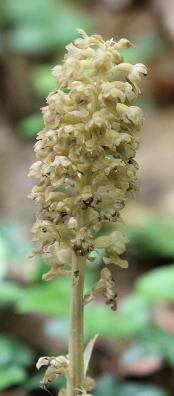
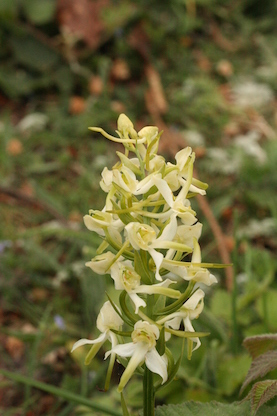
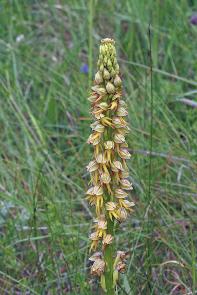
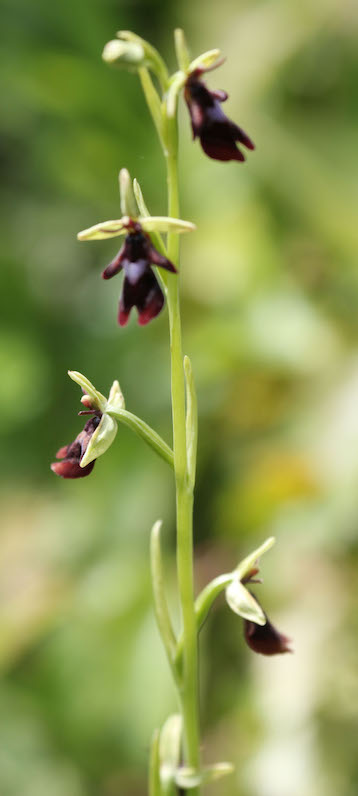
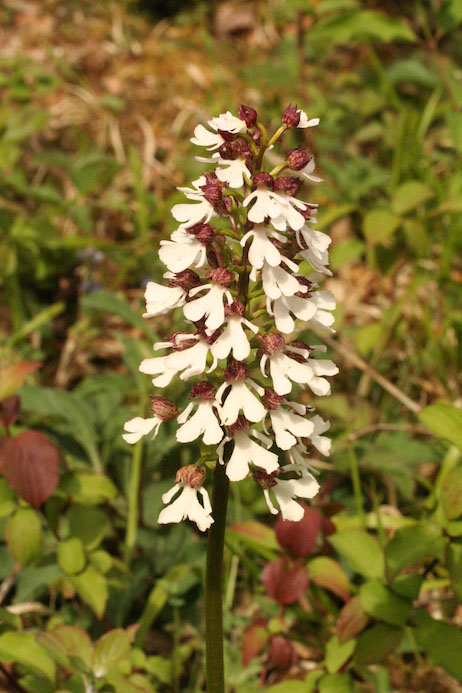
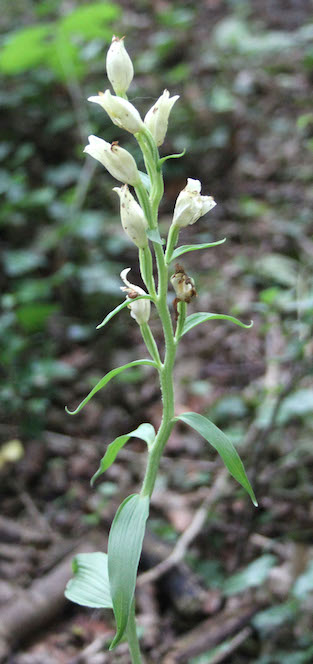
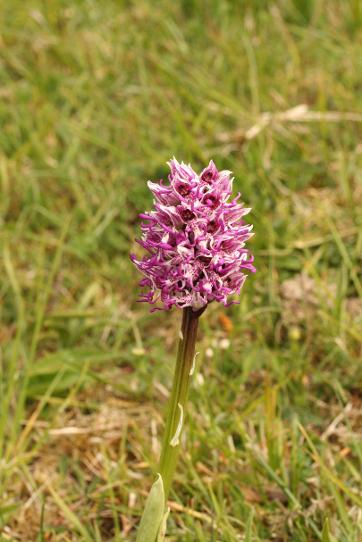
January 2019 - SUPERSENSES
Sight
In the human eye there is a particularly sensitive area known as the fovea which produces a sharp image. A Golden Eagle has two foveae, one of which appears to allow for clear peripheral vision but the main one, which is tubular in shape, seems to act like a telephoto lens which gives the bird visual acuity up to eight times that of a human, allowing it to spot a Mountain Hare at an enormous distance. A hovering Kestrel can pick out small mammals, lizards and even beetles on the ground. While mammals have two eyes, which the brain links together to give binocular vision, some spiders can have eight. The spider’s brain must still produce a sense of distance to enable the spider to catch its prey but it is possible that some of the eyes only produce signals in response to movement of prey. Dragonflies have multi-faceted eyes which must give them some advantage in seeking prey or avoiding predators, and again the brain must combine the potentially multiple images to give the depth resolving advantage of binocular vision with, presumably, something extra in addition. A Great-Spotted Woodpecker on a bird feeder or a Starling looking for food on the ground is focussing at a short distance from its food but still has the ability to detect a high-flying bird of prey passing overhead. The eyes of bees respond to wavelengths of light which extend into the ultraviolet end of the spectrum. Some flowers have evolved to produce patterns which are visible in ultraviolet and direct the bee towards the pollen and nectar.
Sound
Owls tend to rely more on hearing rather than sight though Little, Short-eared and Barn Owls hunt while it is still light. The Little Owl tends to hunt from a perch and is probably as much a watcher as a listener. Short-eared Owls can be seen flying close to the ground over suitable habitat and will target the squeaks from small mammals in the vegetation. The Barn Owl is similar – it will hunt during the day but more frequently at dawn and dusk. The large Ural Owl can detect the noise made by a small mammal moving under snow and can accurately pinpoint where the mammal is. A Fox also has this ability and will listen until it is sure and will then pounce to break through the snow layer and hopefully catch its prey. Bats use sound but it is not the sound made by the insect prey, rather it is high-pitched sound emitted by the bat which is then reflected from the surroundings including the prey. In effect the bat “sees” by reflected sound.
Smell
Moths, being largely nocturnal, cannot rely on sight to find their mates so instead the female releases a pheromone which drifts in the air and can be detected by males several kilometres away. A Turkey Vulture flying over a dense forest cannot see carcases on the ground hidden under the trees so instead it has developed the ability to detect its meal by scent. Stinkhorn fungi produce an odour which even humans can detect but the primary purpose is to attract flies which walk over the smelly surface and inadvertently remove spores which they deposit elsewhere. Bloodhounds have the ability to follow a trail left by a human by detecting the minute amounts of odour drifting in the air. Other dogs have been trained to use their sense of smell to find hidden drugs or explosives, while yet other dogs have been able to detect illnesses in humans by sniffing articles of clothing.
Taste
Several butterfly species lay their eggs on particular species of tree or bush – Brimstones on Buckthorn, Brown Hairstreak on Blackthorn, White-letter Hairstreak on Elm, Purple Hairstreak on Oak. They recognise that they have the correct species by tasting the leaves by walking over them. Young salmon parr which were born in a UK river leave and make their way to the sea where they develop to adulthood before returning to the same river, presumably by detecting a familiar taste in the water.
Humans inevitably view nature through their own senses but to understand the natural world it is necessary to be aware that other animals will be experiencing something at least slightly different.
December 2018 - NATURAL HISTORY SURVEYS
A simple survey starts by noting what is seen on a walk in woods or fields. For long term understanding of changes a more organised approach is necessary.
BIRDS: The British Trust for Ornithology (BTO) arranges various surveys one of which is the Breeding Bird Survey. This involves walking across a 1km map square (and back across on a parallel track) identifying every bird seen or heard and noting which of several distance bands the bird is in (0-25m, 25-100m, >100m). One visit is made in early spring and a second in early summer. Like most surveys this is a sampling technique and will not record every single bird in the area, but over several seasons will show upward or downward trends. There is a current survey which attempts to note the number of Tawny Owls calling in a given area.
BUTTERFLIES: Butterfly Conservation’s survey chooses a route around an area like Selsdon Woods and the investigator walks this transect once a week, in suitable weather conditions, for 26 weeks from 1st April to Sept. A totally separate survey asks people to count and ID butterflies in gardens or other areas and gives an idea of the status of particular species. In conjunction with the above BTO bird survey, butterflies in “the wider countryside” are counted.
MOTHS: Though over the UK there are more day-flying moths than there are butterflies the majority of moths fly at night and the survey technique involves attracting moths to a trap with a bright light. Apart from identifying the moth species an estimate of individual species numbers can be made. An alternative technique of “sugaring” can be used by painting a thick sugary solution on to trees or ropes and checking the moths which are attracted. You might have seen George McGavin using a large floodlit sheet to attract hundreds of moths on a foreign trip.
PLANTS: A cursory glance over the landscape can identify many plants but evidence of diversity requires more detailed information. This can often be obtained by quadrat surveys where all the plants are identified and counted within a 1m x 1m square. This process is repeated about 20 times over the area of interest to allow for varying soil conditions and will usually give a good idea of the range of plants present. This technique is particularly useful to check plant diversity when land conditions are changing when trees and scrub are removed to create or restore grassland.
FUNGI: Fungi are not plants! As the appearance of the fruiting bodies (mushrooms, toadstools, brackets, etc) is decidedly seasonal and varies with weather conditions it can take many years to determine a reasonably accurate idea of the total number of species. The majority of the species can be determined in one season but repeated visits will add new species each year. A survey must involve every month of the year as some fruiting bodies appear in winter or spring while others turn up in summer or autumn.
Other surveys look at small mammals, insects, bats and technology now plays a part. Software and hardware exist to record bird song, bat calls and the stridulations of grasshoppers and will give an immediate suggestion for the species involved. Longworth live traps can capture small mammals for ID and later release. Trail cameras can be set up to detect animals and birds using a particular area.
Surveys are essential to get information about biodiversity. Occasionally a “bio-blitz” can be employed when individuals in a team will concentrate on different species groups and everything is surveyed in one period to get an idea of the current bio-diversity.
November 2018 - FUNGI IN SELSDON WOOD
Early in the year both St George’s Mushroom and Warted Amanaita were found. In June we found a new fungus for Selsdon Wood – the relatively rare Oak Polypore – three specimens of which were growing on a pile of oak logs in West Gorse. During August Tony Flecchia photographed a Chicken of the Woods in Broad Walk, and another one earlier in the year was growing on a Yew tree in Court Wood. A Dryad’s Saddle had returned to the usual tree stump in Stevens Walk. The strange weather this year with prolonged hot conditions and very little rain (even the thunderstorms did not last long enough to make much difference) is not really what we want to produce an abundance of fungi.
A hunt for fungi in the middle of August had some success with finds of one small Beefsteak in Noakes Way and a larger one in Langford’s Way, one Shaggy Bracket low down in West Gorse and another high up on a tree in Bluebell grove, Blushing Brackets, Willow Shield, Collared Parachutes and a couple of Scarletina Boletes which had obviously provided a meal for hungry slugs. In Stevens Walk many Chicken of the Woods were found on one log,
During September Sulphur Tuft became abundant and Turkeytail and Blushing Brackets seemed to be multiplying throughout the wood. A crowd of Fairy Inkcaps occupied the base of a tree. A short fallen branch had a crop of very young (and therefore very tiny) Green Elfcup fungi. A fine display of Oyster fungi was found in Stevens Walk. Tony added Black Bulgar and Silvery Porecrust to the list while I found three young specimens of what may be a Parasol-type mushroom, plus Common Earthball and Dead Moll’s Fingers. Both Sepia and Larch Boletes were found but were damaged by slugs.
With the continuing dry weather many of the softer fungi lasted only a few days so we approached the fungus walk in early October wondering if we would have anything to show. A visit to Littleheath, which appears to retain more moisture than does Selsdon Wood, did find a few cap-and-stem fungi in small numbers but the effect of the dry weather was shown in the absence of several species we would expect at this time of the year. However, Jane Mclauchlin, who was leading this walk, found a specimen of a tiny brown mushroom which grows inside the old husks of Sweet Chestnuts. This is usually considered to be rare but Jane suggested that was because people did not spend time looking for it. The next day was a workday in Selsdon Wood so we took the opportunity to look for the new fungus and managed to find two specimens in Bluebell Walk. Later, while planning the route for the fungus walk, I found another specimen in Greenhill Way, supporting Jane’s idea that it was more common than the books suggest.
Rain finally arrived on the day of the walk, too late to have any effect so our final total of 47 species contained very few cap-and-stem fungi, though we did find a group of Ochre Brittlegills, a crowd of Shaggy Scalycaps, and towards the end of the walk added another new species for the wood – the thick black Glue Crust on a fallen twig. As rainy weather comes in we would expect more fungi to appear, perhaps waxcaps, but fungi do not have to fruit every year and their appearance is very weather dependent. There are however several species which usually fruit in winter or spring so do not stop looking!
Editor’s Note – Photographs of all these species and more can be seen on the Fungi page of the FSW website http://www.friendsofselsdonwood.co.uk/fungi-etc.php.
October 2018 - A Memorable Visit to Sheppey
A number of years ago at the end of October, David Malins and I decided to spend a day birding on the Isle of Sheppey and began by aiming towards the woods around Warden Point where incoming migrants often occur. We soon found ourselves examining a large flock of Goldcrests and were able to detect one Firecrest. A walk along a path found a Little Owl perched on a tree on the other side of a field and on a nearby telephone wire we identified an Alexandrine Parakeet, the larger relative of the Ring-necked Parakeet. On chatting to a group of birders we learned that a Rough-legged Buzzard had recently arrived on the marsh near Capel Fleet and as that was on our proposed itinerary we immediately returned to the main road and sought the turning pointing to Harty Ferry.
Along the narrow road, which rose gradually, we flushed several coveys of Red-legged Partridge before reaching the point where the road dropped away towards Capel Fleet and the marshes beyond.
We were soon rolling down the hill and past the fleet, aiming to join a group of birders parked along the roadside, and flushing dozens of Grey Partridge as we went. No one was actually looking at the Rough-legged Buzzard but it had been seen in the area so we started scanning. A Marsh Harrier was soon visible. A ringtail Hen Harrier flew across the reeds and disappeared. A couple of Snipe flew over. Two high-flying birds turned out to be Marsh Harriers, joined briefly by a Sparrowhawk. Someone found what looked like a large bird perched on a long line of hay bales so we wandered along the road to get a better look. It was the Buzzard. It shortly decided to indulge in some activity and took off to do a fly-past, turning in the sky to show off all its field marks then stopping in a textbook-perfect hover.
Having satisfied ourselves we decided to have lunch at Shellness, stopping briefly to scan the calm sea without having any success in finding birds. At Shellness we trudged along the footpath and at the shingle bank stopped to examine nearby waders. There were Redshanks and Turnstones but a smaller dark wader in a sleeping position drew my attention. After examining it for some time we convinced ourselves we had found the Shellness Purple Sandpiper. Lunch in the hot sun on a windless day watching a calm sea produced little on the sea to attract our attention but there was the roosting flock of waders – Oystercatchers, Bar-tailed Godwits, Ringed Plovers, Dunlin and Sanderling, joined by a flurry of Knot. A small group of Brent Geese grunted contentedly as they swam close to the shore. A walk out to the point did not produce the hoped-for Snow Buntings but there were Skylarks, Linnets and Greenfinch flocks. The retreating tide was rapidly exposing a bay of mud covered by many waders.
On returning to the car we decided to end the day back at Capel Fleet where before long I had spotted a distant Merlin, identifiable by the fluttering flight as it tried to catch a Pipit. Scanning closer I found a Peregrine streaking low across the nearby field, until it suddenly shot up into the air as it was mobbed by a male Hen Harrier. Another birder drew our attention to a Merlin crossing the road behind us. The Rough-legged Buzzard flew from the north side of the road apparently pursued by a high-flying Short-eared Owl which broke off its imagined pursuit to drop down to ground level where we were able to watch it quartering the ground.
As we walked towards another group of birders a Merlin appeared over the road in front of us, momentarily pursuing a Skylark before continuing across the field. We were soon watching a Hen Harrier being mobbed by Crows then saw another Merlin in pursuit of a Pipit. This falcon dropped down to rest in a field where it was examined in telescopes for a long time before it took off again to chase another Pipit. It came to rest again on a telephone pole before once again racing off across the fields. A second Short-eared Owl appeared on our side of the road while the other bird still investigated the other side.
David and I then drove a short distance in the direction of Harty Ferry, hoping to see the Buzzard again. We found 16 Red-legged Partridge in a field and David drew my attention to a large bird perched at the end of a distant hedge. We assumed it was the Buzzard and pointed it out to a car load of birders. We started on our way back and disturbed several Pheasants and a small covey of Grey Partridge which slowly walked off the road into the base of a nearby hedge. As we pulled away from them we saw a large bird at the side of the road. We managed to get within a hundred feet of a feeding Rough-legged Buzzard which had obviously killed a rabbit. Other birders approaching us disturbed the feeding bird which fluttered a short distance into the ploughed field, so we continued our journey home after a marvellous day.
September 2018 - What is Species?
Carl Linnaeus developed a scheme for naming animals, birds, plants, insects, etc. At the simplest level there are two parts to each name, the genus and the species. For example, the thrushes fall into the genus Turdus and the Blackbird becomes Turdus merula, Song Thrush is Turdus philomelos, and so on for the other thrushes. This binomial system of naming is simple, standardised, and is understood all over the world - so what is the problem?
The difficulty arises at the species level where a species is usually thought of as a group of birds, for example, which have shared characteristics and which can breed together. Eagles and Sparrows may share the characteristics of wings, feathers and flight but their modes of life are different and there is no suggestion that they could breed together – they are clearly different species. Chiffchaffs, Willow Warblers and Wood Warblers, on the other hand, are similar birds whose identification causes beginners difficulties. However, they have very different songs and were separated as different species by the clergyman naturalist Gilbert White.
What species name do we give to a hybrid? The American Ruddy Duck (Oxyura jamaicensis) became established in UK and on parts of the continental mainland and began interbreeding with the related White-headed Duck (Oxyura leucocephala). To save the relatively rare White-headed Duck the decision was made to cull all the Ruddy Ducks in Europe.
A bird species which exists in several countries can be divided into groups which are far enough apart that they would not normally have a chance to breed together. Over long periods of time they will develop slightly different characteristics so they are treated as subspecies, but occasionally some of the subspecies are sufficiently different that they are raised to species level with an appropriate name.
A species confined to an island home will investigate all available niches but some individuals will prefer one niche over another and their descendants will tend to do the same, resulting in radiation from one original species to several with different lifestyles. The classic example is the group of Darwin Finches on the Galapagos where the original species has become 14, with varying sizes of bills and different lifestyles.
Herring Gulls provide another problem. Around the northern subpolar region there are several related species. Those close together can breed with each other but as we go further east the colouring and behaviour gradually change so that by the time we have made full circle back to UK we have a Lesser Blackback Gull which does not breed with the Herring Gull. Are these all separate species or should we treat them as subspecies?
Among plants there are several where there is so much variation that the group is divided into microspecies which may be very difficult to separate in the field. Bramble has about 300 microspecies. Picking blackberries will soon convince you that there is more than one Bramble as some fruits are large and luscious while others seem reluctant to ripen and remain as hard fruits with little juice. A glance at a modern field guide will show that there are many microspecies of the pretty little Eyebright flower. A recent book is devoted to trying to separate them in the field but without guaranteeing 100% success.
Modern DNA analysis and molecular biology can separate microspecies but does not necessarily help the field naturalist. In the realm of fungi this type of analysis is showing that groups such as the Inkcaps are not actually related at all and they have now been separated into several new names covering both genus and species. Books quickly become out-of-date so far as names are concerned but it should not stop you from enjoying plants, fungi, birds, insects, etc each time you go out into the fields and woods.
July 2018 - Hedgerows
Hedgerows presumably began as a means of delineating a trackway or a boundary around a field, possibly starting with a dead hedge then progressing to planted trees or bushes. Hawthorn, also known as “Quickthorn” as it does not take long to grow, and Blackthorn are frequently planted to make a hedge around a field. If the field contains livestock then in later stages the hedge can be laid – a process of cutting most of the way through the trunk near the base and laying the trimmed bush over on its side. Vertical stakes are used to contain the laid material which will then send up new growth and make a sturdier barrier.
A mature hedge will inevitably receive seeds from the droppings of birds and from others blown in by the wind resulting in several tree species appearing in the hedge. An approximate age in years for the hedge can be obtained by counting the number of tree and bush species in a thirty metre length and multiplying by 100, so a count of 10 species might indicate an age of 1000 years. However, a hedge of this age would contain mature trees which would surely overshadow smaller species causing them to die out. The count should be taken with a pinch of salt.
Younger hedges often consist of a few species, mainly Hawthorn and Blackthorn, which produce feeding and resting places for insects in the summer and are covered in berries in the autumn, both of which provide food for birds. Blackbirds will build a nest mainly from grasses but the Song Thrush will add a lining of mud. Long-tailed Tits make an expandable nest in the form of a ball incorporating many hundreds of feathers so that as the family grows the nest becomes bigger. Magpies also tend to make a ball-shaped nest but from twigs.
At the base of the hedge the eponymous Hedgehog may have its nest among grasses where the thorny twigs could deter predators which would certainly eat the hoglets and possibly the adults too. Pheasants nest on the ground and a hedge may provide the perfect place for the nest. In very favoured places the Dormouse may occur but it needs access to more extensive tree cover to find Honeysuckle bark to incorporate into the nest and to be able to move amongst the treetops looking for food such as Hazelnuts. Voles, Woodmice, and rats also find hedges useful.
Sparrowhawks nest in trees but will sometimes use a hedgerow while hunting. They fly along one side of the hedge then flip over to the other side in the hope of catching prey unawares. I once watched a Sparrowhawk in my garden, perched on a frame holding bird feeders. It spotted a movement in ivy, about ten feet away, which had reached the top of the fence so it dived off to investigate. The bird got to within a foot of the ivy before it realised the movement had been caused by a cat which was trying to sleep in the ivy. Stopping abruptly in mid-air, it turned through 180⁰and flew rapidly out of the garden.
Longeared Owls will hunt along a hedge in the evening, sometimes in pairs, even beating the hedge with their wings to flush out any roosting birds. If the hedge contains trees with holes they might support a nesting Little Owl which does most of its hunting on the ground.
A hedgerow community includes many insects, birds mammals and also provides shelter for plants growing at the base and, of course, support for Wild Clematis or Traveller’s Joy with the fluffy seedheads that give it the name Old Man’s Beard.
June 2018 - Camouflage and Warning Colours
Camouflage in nature is usually an attempt to avoid predation or to aid a predator to make a successful attack on prey. No animal has the ability that was given to H. G. Wells’ Invisible Man nor is there anything equivalent to Harry Potter’s invisibility cloak so other techniques have to be employed.
One way to avoid a predator is to pretend you are something else – a process called mimesis. The caterpillars of some moths look like bird droppings. Geometrid moth caterpillars when at rest imitate a small twig. Lily Beetle grubs hide under a covering of their own faeces, while the adult sports a bright red colour which presumably indicates that it is distasteful so that a curious bird might attempt to eat one but would not make it a habit and the majority of the beetles would survive to destroy your lilies and fritillaries if you grow them in the garden.
The female wasp spider hangs on her web amongst grasses and has yellow and black stripes which suggest a wasp or a hornet. I have seen bright yellow crab spiders waiting for insect prey near the centre of ox-eye daisies and on poached egg plants in gardens. In these positions they are easily overlooked but what was the crab spider doing resting on the bright purple flowers on a buddleia bush? There are two lunar hornet moths which do a good impression of a hornet which is likely to give them some protection from predatory birds and small mammals.
A human example which might be described as mimetic design is the cell tower in Littleheath Woods which looks like a tree so that it is relatively unobtrusive in its position among real trees.
Hiding in plain sight is employed by the pale green caterpillars of Green-veined White and Orange Tip butterflies when they lie along the ribs of their garlic mustard food plant.
The cryptic colour patterns on the plumage of birds like nightjar and woodcock make it difficult to see them as they rest on the ground. On one occasion on Bookham Common while carrying out a bird survey I did not see a woodcock until I almost trod on it.
Female birds which spend a lot of time sitting on a nest often have drab colours which may offer them some protection from the eyes of predators. Examples include blackbird, song thrush, mallard, pheasant and many waders such as snipe, dunlin and curlew. Lizards tend to have brown or green colouration which makes them unobtrusive in their normal habitat.
In parts of the country where snow is frequent in winter animals like mountain hare, ptarmigan and stoat change their colouring to one which is mainly white. Stoat in ermine is an unusual sight in the south of the country but I did encounter one on the Isle of Sheppey when there was virtually no snow on the ground and the white animal was quite visible as it ran around on the grass.
The underside of the wings on both Comma and Peacock butterflies is black and when the wings are closed they look like dead leaves. The Peacock has two “eye” markings on the upper wings and when the wings are suddenly opened this can startle a predator, allowing the butterfly time to escape. The upperside of the Comma’s wings have a mottling of shades of chestnut and orange, not exactly a cryptic colouration, but the pattern together with the ragged edge to the wings is a “ruptive” device which disguises the outline of the insect.
Many butterflies are quite colourful, as are birds like Green Woodpecker and Kingfisher, so presumably something other than camouflage allows them to deceive or avoid predators.
Other examples of warning colours are the yellow and black stripes on the caterpillars of the Cinnabar moth as they feed on Ragwort, and the black and red of the adult moth, and similar black and red colours on the adults of Burnet moths.
May 2018 - Birds & Butterflies
Bird migration in spring starts with movement of Sand Martins, Swallows and Ring Ouzels sometime in March but as we move into April the number of species rises rapidly as Wheatears and Whinchats, Reed Warblers and Sedge Warblers join the throng. These, and other species, do not breed in local woods but may occasionally be found as they pass through to their breeding grounds. Honey Buzzards need to find thriving bees’ and wasps’ nests so they are likely to arrive later. Hobbies require lots of flying insects including dragonflies but will chase after swallows and martins. Depending on weather conditions on the near continent some birds will overshoot their normal route and will turn up in southern England, more likely on the coast but perhaps even in local parks and woods. Listen for unusual sounds and scan the skies – you might even see Bee-eaters or a Hoopoe, the latter having been seen on Farthing Downs and even at the end of Featherbed Lane.
Another sign of spring occurs as butterflies start to emerge. The first to appear have been hibernating through the winter and include Brimstone, Peacock, Small Tortoiseshell, Comma and possibly Red Admiral. As other species choose to pass the winter as pupa, caterpillar or egg their emergence will be at different times. An adult butterfly will emerge from the pupa but a caterpillar has to eat enough food before it can enter the pupal stage and the egg is even further behind as it has to hatch into a caterpillar then go through the process of getting to the pupal stage before we can expect to see the butterfly.
For a short period in early spring the Orange-tip butterfly can be found with the whitish female visiting the caterpillar’s food plants, Garlic Mustard (Jack-by-the-Hedge) or Ladies Smock, while the more visible orange-tipped male flies around looking for females. At this time it is possible to find single eggs laid either close to the flower or under a leaf on Garlic Mustard. If several eggs appear close together it could be a problem as the growing caterpillars can be cannibalistic.
Throughout spring and summer more butterfly species will emerge and numbers of individuals will increase. Some species are only ever recorded in small numbers while others, like Meadow Brown for instance, appear in hundreds in good weather at the right time of the year. It is obviously useful to know which species are likely to be on the wing at different times so Butterfly Conservation have produced a chart showing expected flight times for butterflies in Surrey. Copies of this can be found on the SRA https://selsdon-residents.co.uk and FSW www.friendsofselsdonwood.co.uk websites.

|
Butterfly Flight Periods.pdf Size : 1045.385 Kb Type : pdf |
April 2018 - Leaf Litter
Autumn leaf fall carpets the woodland floor in a thick layer of deposited foliage. Just as with fallen twigs and branches, if nothing else happened this layer would increase with time but luckily there are many agents which prevent this from happening. The larger species of earthworms drag leaves underground to act as food but in doing so they effectively produce compost in the upper layer of the soil. Turning over a leaf will often expose a mass of fungal threads (mycelium) hard at work breaking down the structure of the leaf. Some leaves will be covered in moulds which also break down the leaf and all leaves will carry a population of bacteria doing their bit.
Amongst the leaf litter is a menagerie of other creatures living out their lives. There are woodlice scurrying about and helping to break down the fallen leaves. When leaves are disturbed, tiny springtails leap into the air like fleas. Pseudo-scorpions are equally tiny and crawl under the leaves like lobsters under a seaside rock. Even smaller thrips and mites join the throng. Snails and slugs eat the leaves but some slugs are carnivorous and eat other slugs. The minute, and extremely hardy, tardigrades or water bears can be found by careful searching particularly where there is moss.
All of these small denizens are preyed upon by larger ones. Millipedes are largely vegetarian but the fast-moving centipede is a carnivore. Violet ground beetles and other carnivorous beetles are relatively large and will feed on the smaller creatures, but there is a multitude of smaller mainly herbivorous beetles which can be found in the plant material. Voles, wood-mice and yellow-necked mice will eat nuts and blackberries but will not reject a juicy meaty morsel. Shrews are decidedly carnivorous and spend most of their day eating.
Further up the food chain we have birds like blackbirds, thrushes and carrion crows which can often be seen throwing aside leaves as they search for something to eat, possibly including the occasional chrysalis of a moth, many of which remain in the top layer of soil throughout the winter. Smaller birds like tits will feed on the ground and, apart from going after the smaller creatures, they may also investigate the grubs inside the galls on fallen leaves – for example spangle and silk-button galls on oak leaves. If horse-chestnut leaves are involved there will be a multitude of horse-chestnut leaf miner grubs spending the winter amongst the leaf litter from which they will later emerge to attack the next season’s horse chestnut leaves. The small mammals, birds and beetles in the leaf litter may be taken by tawny owls.
Woodpigeons will help to demolish the crop of fallen acorns and grey squirrels will be at work on the hazel nuts and sweet chestnuts. Some acorns, possibly while still on the oak tree, will be carted off by jays and deposited elsewhere for later consumption.
Even the mechanical action of deer, foxes and badgers trudging through the woodland will help to break down the leaves and help to return nutrients to the soil, later to be taken up by trees to enable them to make more leaves and to start the whole process again the following year.
Leaf litter is an important habitat for the number of creatures it supports and for the nutrients released as it decays.
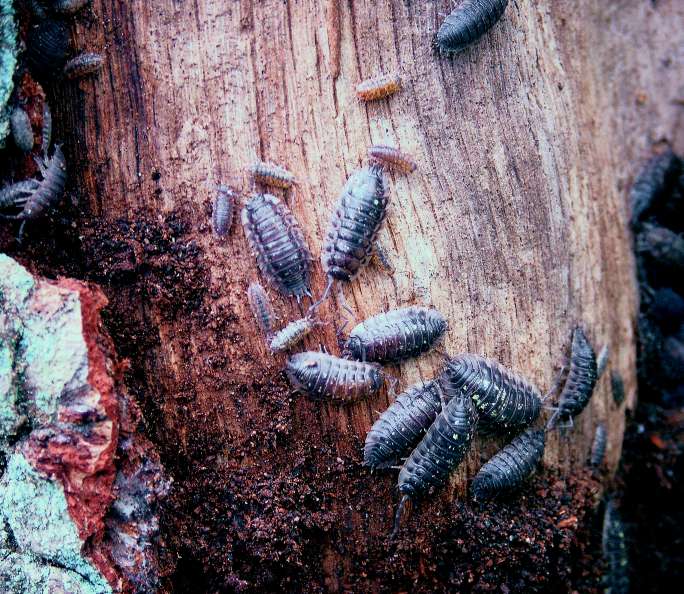
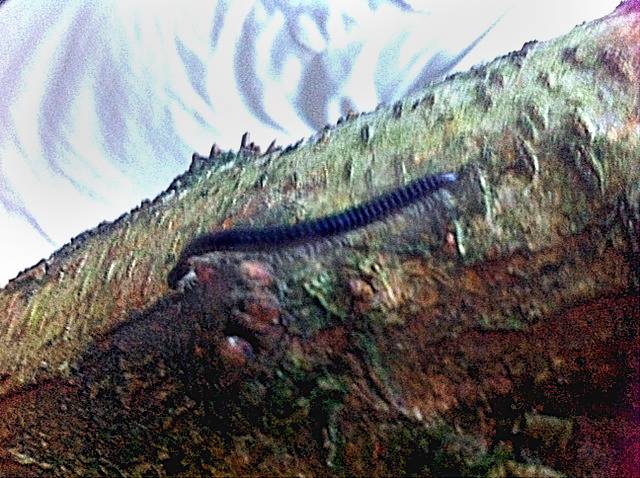
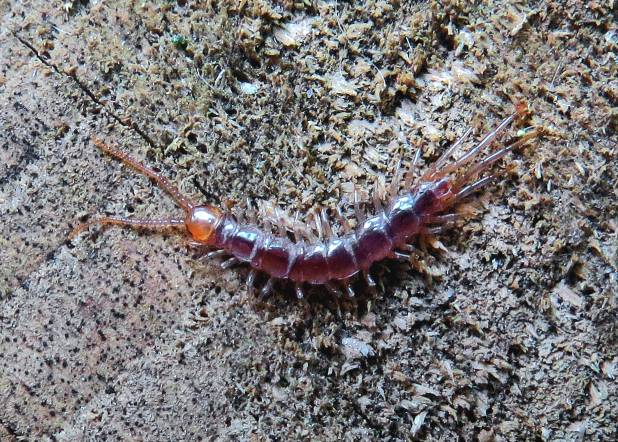
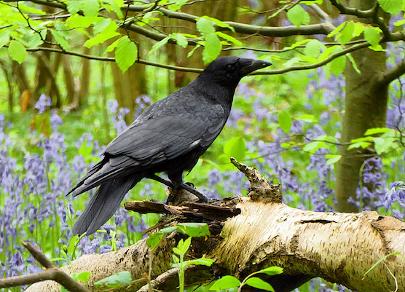
March 2018 - Woodland Development
When a grass field is converted to a new woodland the young tree whips are usually spaced out at roughly equal distances. As they grow their growth is affected by many factors. Deer will browse on the whips and, along with grey squirrels and voles, will frequently ring-bark the young shoots which will lead to the demise of that individual. At a later stage, minor damage to the bark might let in disease and cause a few more young trees to disappear. What began as equally-spaced whips soon develops gaps.
Some of the trees will survive these problems and will become relatively mature trees sporting a full crown of foliage. By this stage they can be susceptible to the effects of high winds, perhaps coupled with disease, and a few more trees will fall and possibly take others with them.
In a woodland composed mainly of Beech the crowns will overlap and form a closed canopy, shading the ground underneath and preventing the development of a shrub and field layer. Part of Croham Hurst is like this and the ground cover is largely composed of Beech leaves. An Oak woodland tends to be slightly more open so that the ground might be covered by Bramble with a scattering of other tree and bush species like Rowan and Holly. Where gaps form when trees fall other species will take advantage, and at the woodland edge where there is more light there may be Wild Cherry, Bird Cherry, Hazel and other species.
Beech, Oak and Horse Chestnut when they are mature will develop very large branches and if there is any decay involved they will frequently drop some of these branches causing more damage to the tree, letting in more disease, and creating more gaps in the woodland. Over a long period of time the make-up of the woodland changes. Species appearing in the gaps may grow fast enough to reach the canopy where they can develop into a mature tree, or they may be shaded out before they can do that and will eventually weaken and die. After several decades, the woodland will look very different from the original planting.
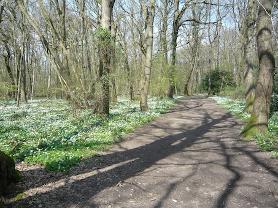
Importing of foreign timber products or plants has the potential for introducing disease such as Dutch Elm Disease, Ash dieback, Emerald Ash Borer, Sudden Oak Death and others. Dutch Elm Disease was certainly devastating for the Elms in this country and some of the other diseases could have similar effects on other species of tree. In some cases, genetic strains have been discovered which seem to offer resistance to the disease and could offer some hope for the future.
A well-managed woodland increases biodiversity by creating micro habitats which encourage a wide range of plants, shrubs, insects, mammals and birds. Fallen branches and trunks are left to decay, producing conditions for invertebrates and fungi to prosper. Young coppiced areas are attractive to butterflies and ground-nesting birds but they will move on if the coppice is neglected.
February 2018 - Plant Communication
If you are old enough you might remember a song with a line which says “I talk to the trees, but they don’t listen to me” – perhaps the singer was expecting the wrong language.
Plants, including trees, have different ways of communicating depending upon the circumstances and the intended recipient of the message.
Rhododendron dissuades other vegetation from growing nearby by sending a command via toxins in the leaves and in the soil, as does the equally exotic Eucalyptus tree. Laurel has a similar effect though the toxins might be weaker. Holly has thick evergreen leaves like Rhododendron and Laurel but talks to browsing animals rather than other vegetation. Its leaves are edged with spikes to prevent browsing but higher up the tree the spikes are unnecessary and frequently the upper leaves have a plain edge. The Holly also needs to disperse its seeds so it produces bright red berries to persuade birds to swallow them. The red pulp is digested and the hard kernel is expelled elsewhere.
Trees need their leaves for photosynthesis so when they are attacked by caterpillars some species produce distasteful toxins in their leaves only when the caterpillar starts its meal. Some moth caterpillars are able to continue eating and will absorb the toxins; becoming toxic themselves so that they are less likely to be eaten by predators. Ragwort plants are poisonous but the caterpillars of the Cinnabar moth happily absorb the poison. In turn they communicate this to potential predators by adopting the bright yellow-and-black stripes to warn them off. Other brightly coloured insects like ladybirds, soldier beetles and Burnet moths use their colouration as warning signs that they are distasteful.
Communication can be more subtle. When a tree is attacked by a plague of munching monsters – Oak Processionary moths for example – the defensive chemicals produced by the tree find their way down to the roots and into the vast network of fungal mycelium in the soil. Because other trees are connected to the same network they get the message about the attack and may be prepared for any movement of the caterpillars in their direction. The fungi not only transport nutrients but also act like a telephone system to convey messages.
Flowering vegetation needs to attract pollinators and has to make use of the abilities of these pollinators. Insects like bees can see into the ultraviolet end of the light spectrum so many flowers have marks pointing towards the source of nectar and pollen which stand out vividly if examined in ultraviolet light.
Several UK orchids – Bee, Early and Late Spider, and Fly – produce flowers which mimic the appearance of the appropriate female insect and in some cases may even exude a pheromone similar to that of the insect. The male insect which is attracted will pick up pollen and transfer it to the next plant it visits thus achieving cross-fertilisation. The Bee orchid is a bit different as the bee which should carry out the pollination either does not occur in UK or is extinct and the orchid produces seed by self-fertilisation.
Plant communication can be chemical, visual, olfactory, tactile and perhaps involves the sense of taste. Hearing is about the only sense not in obvious use so you can talk to the trees and possibly they will listen but it is likely that the conversation will be one way and you will not notice their response.
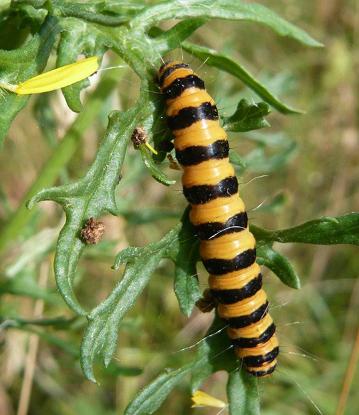
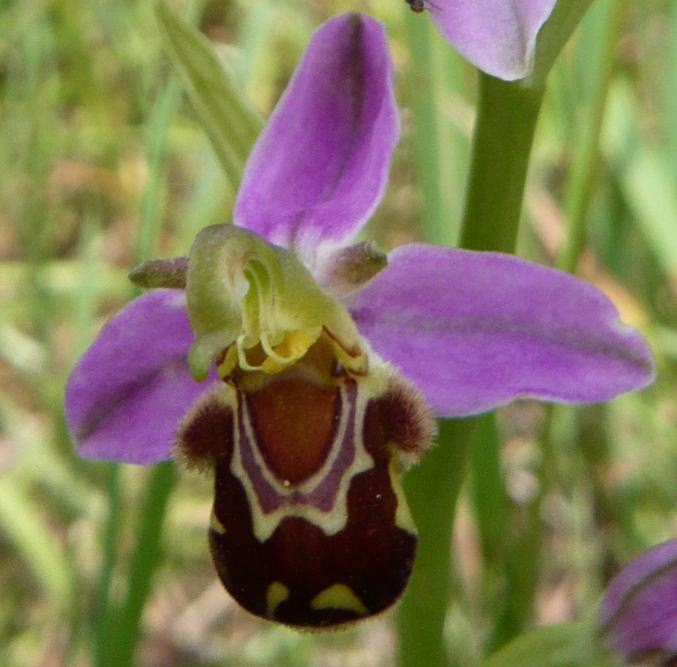
In different parts of the country the soil conditions vary - from areas dominated by chalk or limestone, on the alkaline side of neutral pH, through to the other extreme where heather and peat are dominant and conditions are more acidic. Plants, trees, insects and associated wildlife are affected by soil conditions and what will succeed in one area might not survive in another. A woodland planted with a single species of tree, for example spruce or larch, will have its own range of flora and fauna but the biodiversity will be relatively restricted, which is partly why foresters are encouraged to include some deciduous trees amongst their conifer plantations.
Our local woodlands tend to have oak as the main tree species but with significant amounts of ash, field maple, sycamore, hawthorn, blackthorn, and smaller amounts of hornbeam, rowan and other species. This range of arboreal habitat encourages an increase in biodiversity both on the ground and on the trees themselves. Oak on its own supports an enormous number of insect species. Decaying wood is essential for Stag Beetles as their grubs spend several years munching their way through the wood.
Fungi play an important role in recycling organic matter and returning it to the soil but some act more directly by forming a relationship with a particular tree or plant species and drawing in nutrients from a larger area than the tree or plant roots can reach directly. Application of chemical fertilisers will kill most fungi and lead to a reduction in the health of plants and trees. Applying compost in a garden or allotment feeds the soil bacteria, fungi and invertebrates which in turn produces conditions favourable for growing plants.
Forestry work such as opening up rides in woodland, or creating open glades, allows more light and warmth to reach the soil and encourages the ground flora and also creates a woodland containing trees with a range of ages. In turn this allows insects including moths to increase which will encourage these areas to be used by bats and by woodland butterflies such as Silver-washed Fritillary, White Admiral and Speckled Wood. Where dead trees are left standing if considered safe, or where felled trees are left lying on the ground, invertebrates and fungi will increase and help to support other wildlife including woodpeckers and small mammals.
Coppicing is a traditional management technique in which trees, particularly hazel, are cut down to ground level and allowed to regrow for several years before being cut down again. In the early years after coppicing there is a flush of ground flora such as bluebells and brambles which will encourage insects. A little later ground nesting birds like Chiffchaff move in and in very favoured places there may even be Nightingales. After seven or so years coppicing can be repeated and the cut material can be used for fencing, tree stakes, etc. Repeated coppicing keeps the woodland relatively open and prevents the trees from becoming so large that they shade out the ground flora and reduce the biodiversity.
To keep or create a high level of biodiversity it is necessary to consider the conditions required by certain species. Brown Hairstreak butterflies need a “master” tree where the males and females can meet but they also need a blackthorn hedge in which to lay their eggs. Hazel dormice require a relatively closed tree canopy so that they can move from tree to tree as they are reluctant to cross open ground. In suitable places they can even be found in hedges.
Deer have a disproportionate negative effect on biodiversity. Their effect as browsers is most obviously seen where there are large numbers of deer as the local trees show a browse line below which much of the foliage has been eaten. Their habit of eating young re-growing trees affects the number of small mammals, and where they graze they seem to select the most interesting plants rather than the coarse grasses. In other countries where predators like lynx or wolves have been re-introduced to control deer numbers there is a positive effect on biodiversity as numbers of insects and small mammals increases.
A classic example, not involving predators, is the re-introduction of beavers. Where beavers are introduced into a watercourse their dams produce ponds which form conditions favourable for fish and amphibians, which in turn attract otters, herons and other water birds and gradually create a community which would not otherwise exist.
A high level of biodiversity usually implies a wide range of habitat types, which may require management such as coppicing, felling trees and re-planting, cutting grass but removing the material to allow flowers and fungi to grow, retaining decaying trees while standing or fallen, removing some of the bracken and bramble which otherwise might dominate an area, etc.
Consider this example from another country. In Bolivia there is a bee species of which the male visits orchids to collect their scent which he uses to persuade the female to mate. The female is powerful enough to be able to force her way into the flowers of the Brazil nut tree to fertilise them. The fruits which develop are like cricket balls filled with the Brazil nuts. One animal which has the ability to open the ball is the rodent known as the Agouti. Apart from eating some of the nuts it also hides them in the soil like a squirrel burying acorns. As a result some will germinate and produce new trees. Each stage is required for the eventual success in propagating the tree. [This paragraph was based on my reading of “The Plant Messiah” by Carlos Magdalena – a fascinating story of his attempts to save rare plants from extinction].
Biodiversity is important if only because we do not always understand the intricate relationships amongst different organisms.
December 2017 - Bird song – Listen to the rhythm
At this time of the year few birds will be singing, though Great Spotted Woodpeckers will drum and Tawny Owls will call to advertise their territories, but it is possibly the best time to start paying attention to bird song as there are so few songsters to cause confusion.
While learning to identify bird sound can at first be a confusing exercise, each bird species has characteristics which help in the learning process. The rhythm with which the notes are released can often be described in words which act as a memory aid.
The rhythm of a Woodpigeon’s notes sounds like “Take two cows Taffy, take two cows, take” with the first phrase being repeated and often ending on the single “take”. A Collared Dove sounds like “coo, COO, coo” with the emphasis on the second syllable but it can add in a harsh note. Stock Dove, often out of sight, has a distinctive “Oo hoo, oo hoo, oo hoo”.
Most people will recognize the flight call of a Jackdaw - “Jack”, the “Caw” of a Carrion Crow, the harsh squawk of a Jay, the rattling chatter of Magpies, or the screech of a Ring-necked Parakeet but it is the genuine song birds which seem to produce difficulty.
Song Thrush is the most distinctive as it repeats a number of notes then switches to something slightly different and repeats that. The repetition is all that is needed for identification. The related Mistle Thrush is a larger bird and has a more powerful voice but contents itself with relatively short series of notes. It is not also known as the Storm Cock for nothing as it can be heard hurling its defiant song to the wind from the top of a tree during inclement weather. Blackbird has a quieter and sweeter song than the Mistle Thrush and can be heard anywhere in the woodland, usually ending in a clatter of alarm call if it is disturbed.
I would suggest starting by convincing yourself that you can recognize the song of the Robin. For me it seems reluctant to give away its whole song at once, dribbling out a few slow notes before stopping as though making sure it has been noticed before graciously throwing out a few more notes – it can even be heard singing late in the evening. The next step is to latch on to the Wren. For such a small bird its song, coming from low vegetation, is an explosion of notes released as though from a machine gun and identifies the bird as soon as it is heard. The third bird I would associate with Robin and Wren is the Dunnock. Dunnock is a bird which skulks in the undergrowth and is often invisible when it sings, though it can sing from the top of a tree in the right conditions. Its song is a sweet jumble of notes which last longer than the Robin’s and are at a higher frequency. If you can sort out this trio you are well on the way to learning bird song.
Many people express difficulty in separating the songs of Blackcap and Garden Warbler. In most woodlands around Croydon the song you are likely to hear in the summer is that of the Blackcap. The song is a cascade of notes but at some stage there is always a clear fluty note. If a passing Garden Warbler stays long enough to start singing there can be confusion but the song is a continuous out-pouring of notes with a more bubbling quality than the Blackcap and usually issuing from a hidden perch whereas the Blackcap is often happy to sing in full view.
In summer the woods are usually full of Chiffchaffs repeating their name – “Chiff, chiffchaff” but the similar-looking Willow Warbler, which might be present, has a song composed of a series of sweet descending notes. The third of this group of birds is the Wood Warbler, probably only a passage migrant nowadays though it used to breed on Addington Hills before the tramway was built. It has two parts to its song, a plaintive “piu, piu, piu” followed by a long trill. Though these three birds are somewhat difficult to separate on sight, they are easily identified by their songs. The separation into three species originated from the observations of the clergyman/naturalist Gilbert White whose letters about general natural history were eventually collected in the book “The Natural History of Selborne”.
The finches have very distinctive songs. Goldfinch has a tinkling quality which is also heard in the contact calls made in a flock of Goldfinches. The male Greenfinch sounds as though he is swearing “Dzweer” and will often issue his song as he flutters around in a song flight. The Bullfinch has a very quiet “tyou, tyou” which might be the only indication you have that a Bullfinch is nearby. The Chaffinch has a rhythm that is reminiscent of a bowler in cricket running up to deliver the ball. The first part of the song is like the patter of footsteps as the bowler makes his run but ends with a sudden release which is distinctive.
Great Tit has a simple song which sounds like “Duty, duty” or Teacher, teacher” but it is notorious for making many other noises which means that an unknown song or call might be another of the Great Tit’s repertoire. Blue Tit has a song which sounds like the high-pitched squeaking of a gate “Ee, ee, ee”. Coal Tit is “See too, see too” or “Titty wee, titty wee”. Marsh Tit is very variable but usually contains a rapid “Chip, chip, chip” or “Schoopi, schoopi, schoopi”.
Parties of birds moving through woodland will make calls to maintain contact. Blackcaps hidden in bushes will give an alarm call which is a series of “Tick, tick” noises (as will Common Whitethroats) and there are other sounds made by birds at different times. One noise which is worth being aware of is when a Carrion Crow makes a number of urgent repeated calls – look up, it is probably mobbing a bird of prey or a Grey Heron.
There are other species which can be heard in or over the woods such as Nuthatch, Treecreeper, Goldcrest, Buzzard, Sparrowhawk, and occasional birds which pass through such as Lesser Whitethroat but I will leave these as exercises. There are many UK birds I have not mentioned and in other parts of the country, even close to Croydon, you will hear songs which you do not immediately recognise. Listen to the rhythm and consult the field guides. When you think you have narrowed down the possible candidates try listening to a recording, either on a DVD or on a site like the RSPB, but this is only worthwhile if you know which species you want to investigate. You could, of course, do the reverse and start by listening to one species on a recording then go out to look for it. However, it is not a good idea to attempt to memorise all the songs at once on a recording unless it is something like Robin, Wren and Dunnock which you are trying to separate.
November 2017 - Nature books with a difference
Reading these books really stimulated my sense of wonder! They are not field guides which help to identify individual species, instead they take a more general view.
Serengeti Rules by Sean Carroll
Subtitled “The Quest To Discover How Life Works And Why It Matters” this book investigates the general rules that govern how life works, from the dynamics of the vast herds of animals on the African plains and sometimes surprising relationships among different animal species, to the cells in the human body. Understanding of these rules will affect how we treat large ecological systems and also aid in development of more effective medicines.
The Vital Question by Nick Lane
Lane’s book covers some of the same material as Carroll’s but emphasises the role of energy in the origin and development of life. It looks at cell structure and chemistry and the fundamental development of cells upon which all life is built.
Junk DNA by Nessa Carey
Long before the discovery of DNA and the significance of genes the French scientist Lamark decided that giraffes got their long necks because they had to stretch to reach leaves high on a tree and that this was carried through into the next generation resulting in a gradual increase in neck length over time. Scientists elsewhere considered this idea to be nonsense and this was reinforced when it was realised that much of life is influenced by genes. When the human genome was sequenced it was realised that genes, which code to produce proteins, were surrounded by vast amounts of so-called junk DNA which did not produce proteins and appeared to do nothing. The modern interpretation of junk DNA is that it acts as a series of switches so that genes can be active or not. I am amused that this leads to an explanation for something like Lamark’s ideas! A living organism reacts to its environment and this will decide which genes are switched on and off. This can produce changes which are transmitted to the next generation. This is the basis of the study of epigenetics explained in a well-written text by an expert in the field.
Life on the Edge by Jim Al-Khalili & Johnjoe McFadden
This book introduces modern concepts of biology in which the weird principles of quantum mechanics are used to explain the working of photosynthesis, how enzymes affect chemical processes, how birds find their way during migration, etc.
What Should a Clever Moose Eat? by John Pastor
Based in North America, John Pastor looks closely at animals and birds in their environment, discovering how the Moose in the title can influence and create its own environment and produce something which affects the lives of many other creatures. Pastor also considers the shapes of trees and the leaves they carry, the relationship between birds and woodland pests, the effect of beavers on the environment, etc. This book tries to ask and answer fundamental questions.
Arrival of the Fittest by Andreas Wagner
The usual interpretation of Darwin’s theory of evolution is that it relies on random mutations in genes which occasionally lead to improvements – the “survival of the fittest”. Wagner looks at the rate at which random mutations can occur and concludes that there has not been enough time for this mechanism to have produced the organisms we can see around us. The book is an elegant presentation of the results of his research into the way that changes actually occur.
***
These books are likely to be found under the heading of “Popular Science” rather than natural history. Reading them might change the way that you think – you have been warned!
Editor’s note – All of these books are available from Amazon and on the Kindle.
In early August, while working in Leafy Grove in Selsdon Wood where winter forestry work had cleared lots of trees along the edge of the track, we found a large number of fungi of more than a dozen species. Several had never been recorded in the wood before, including the deadly poisonous Panther Cap, off-white Peziza species cups (which are difficult to identify to species level), Tawny Grisette and Mouse-pee Pinkgill with its distinctive smell which gives it the common name, and within a couple of days most had vanished. Over subsequent days additional species were found in other parts of the wood but many of the larger ones were showing the effects of slug damage, even on poisonous species to which the slugs seem to be immune. Deer, voles, wood mice, squirrels and slugs will all sample various mushroom species so it can be difficult to find undamaged specimens.
Amazing numbers of Amethyst Deceivers were found in various places, sometimes in groups of more than a dozen, but the characteristic purple colouring, while retained on the gills under the cap, had often vanished from the upper surface leaving a pale almost white cap colour. Investigation of some large blackened mushrooms, well past their best, revealed 40 or 50 others of the same species in much better condition, enabling them to be identified as Blackening Brittlegills. True to their name, within a few days only the blackened remains were left. While searching for them, off The Wend near Leafy Grove, large numbers of Common Earthballs were also found, with small numbers of the yellow Ochre Brittlegill.
The brilliant Orange Peel fungus appeared near the old fire site in Leafy Grove used by the forestry contractors during last winter. A Larch Bolete by the larches in Middle Gorse was destroyed by the grass-cutting machine which was used to widen the paths. Hordes of bright yellow Sulphur Tuft grew on many piles of fallen logs but the colour soon disappeared as the fungi decayed. The white Crested Coral was found particularly in West Gorse and in Beech Grove where it grew along the edge of the path so that it easily became trampled by unobservant walkers. The white colour dwindled to a grey-brown shade as the fungus became infected by a different organism.
The button-shaped Black Bulgar adorned fallen branches and tree stumps and the equally black Witches Butter grew on branches where it had probably lain almost invisible in a shrivelled state during drier conditions. The first Candlesnuff fungus of the autumn and winter grew on fallen twigs near Bluebell Grove.
Many of these species should return as the weather becomes colder and wetter and will be joined by others which we have not seen so far. Waxcaps tend to appear in grassland late in the autumn and there are even species which seem to prefer winter conditions, such as Velvet Shanks which can grow in large groups on dead timber and Scarlet Elfcup which might show up on mossy ground.
Some species grow on or near conifer wood while others prefer associating with deciduous trees. Even some of the species on the soil could be growing on buried wood.
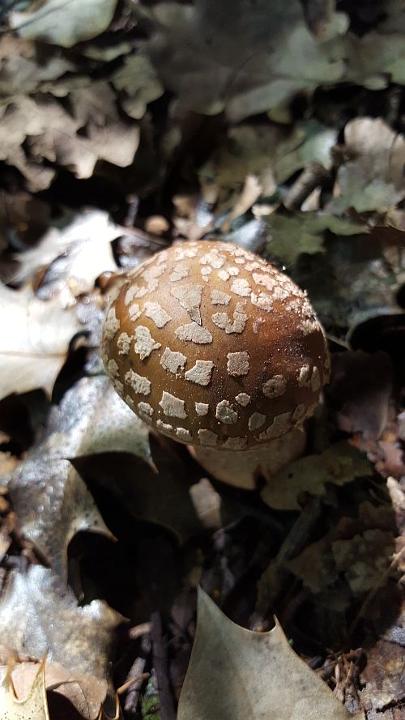
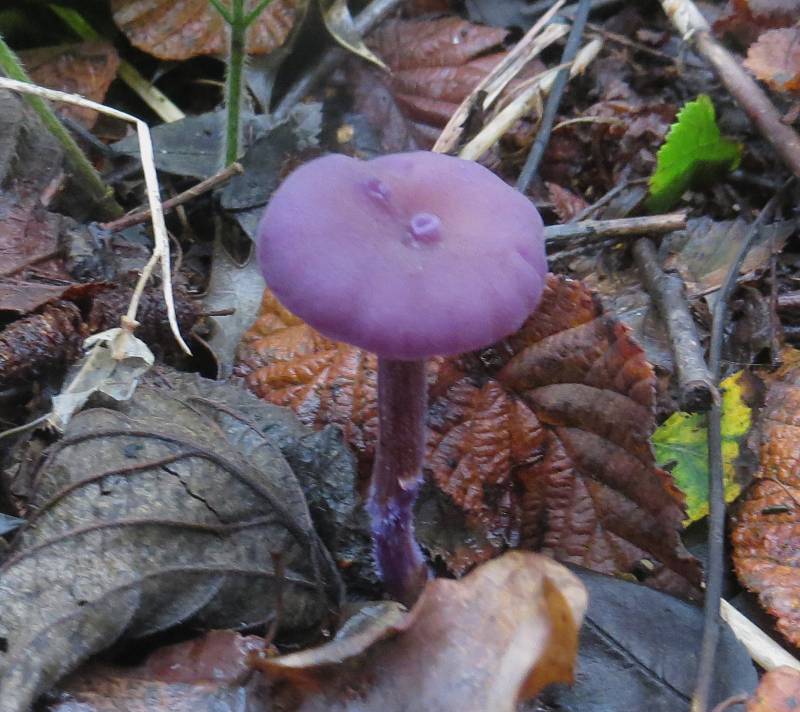
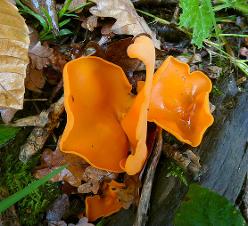
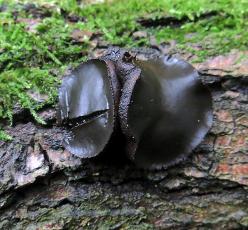
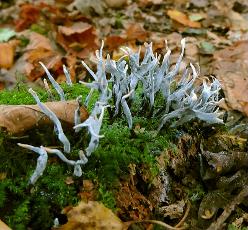
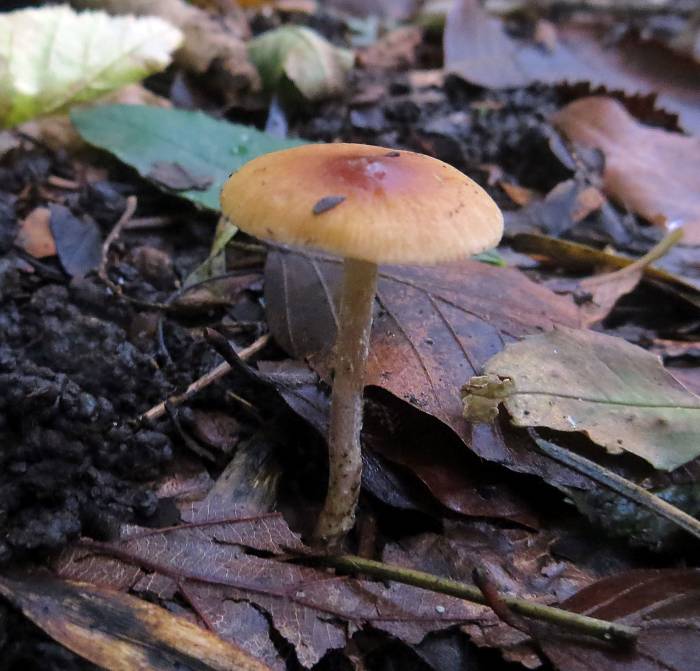
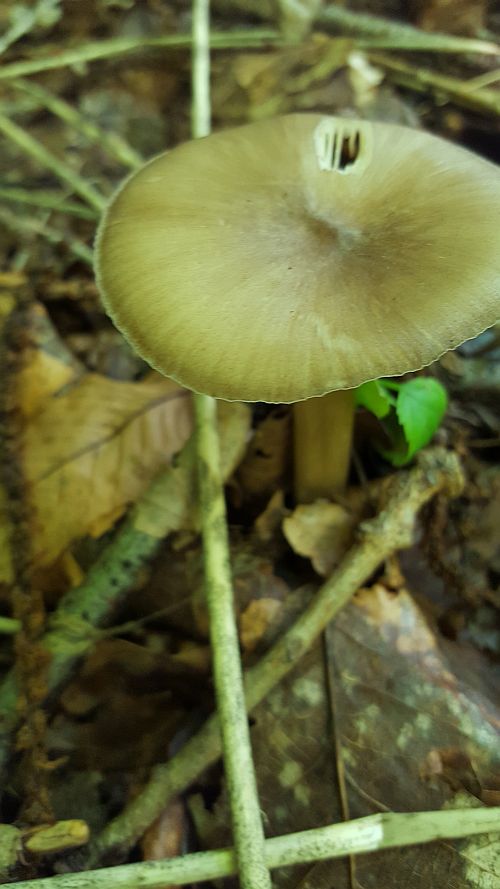
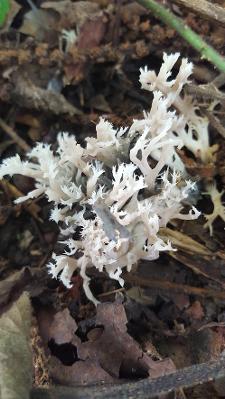
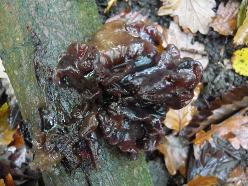
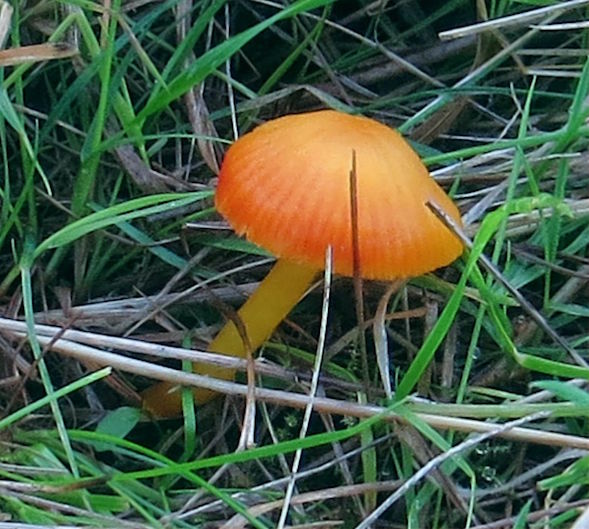
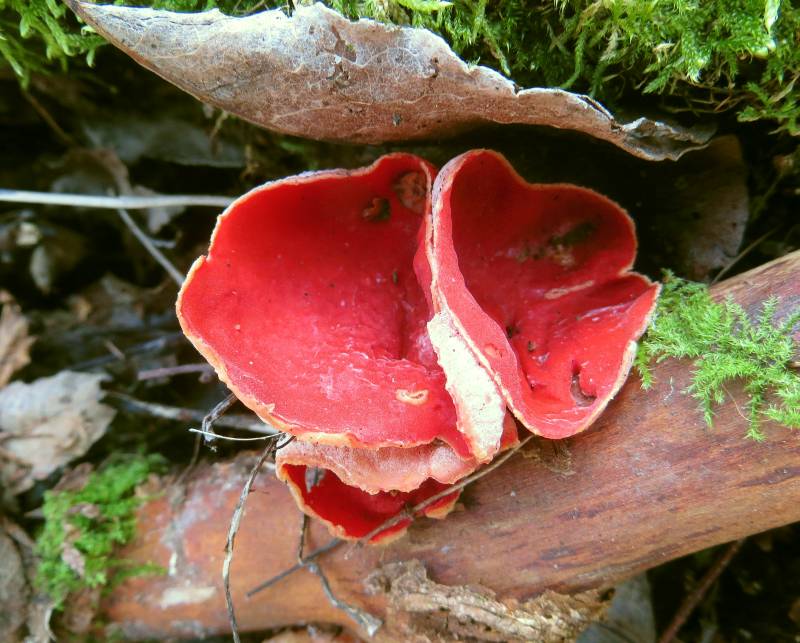
Beatrix Potter made hedgehogs famous as Mrs Tiggywinkle and the name has stuck. Hedgehogs’ main activity takes place at night possibly because their favourite prey is available at the same time. They feed on slugs, earthworms, beetles, etc. and do a useful job when their territory includes a garden. Unfortunately, many gardens are enclosed with no way to enter and might be too tidy or too small to sustain a hedgehog which needs to roam over a larger area in its search for sustenance. If there is a possibility to move from one garden to another there is a better chance for survival.
There are many hazards to be avoided. Vehicular traffic is an obvious problem and where hedgehogs are abundant it is not unusual to find deceased individuals. In addition, use of slug pellets in the past has led to sickly and dead animals. There are more natural predators such as foxes and badgers which will eat hedgehogs, particularly when they find a nest of hoglets. In any area where badgers are common there are likely to be very few hedgehogs and since many of the local woodlands have good populations of badgers this must have a negative effect on hedgehog numbers. In addition, a stressed hedgehog can eat its own youngsters.
While all these factors can lead to a reduction in sightings of these animals the main cause is probably a lack of suitable interlinked habitats which allow longer nocturnal excursions in search of food or mates, and will also provide more, potentially safe, nesting and hibernating places. I have had a single hedgehog in my garden (on the edge of Selsdon Wood) in the last 47 years and on the few occasions when I have been in the wood in the evening there has been no sign of hog activity. When a male follows a female he emits a curious “chuffing” sound so that he sounds like a miniature steam engine (or perhaps he is just out of breath!).
I would be very interested to hear of any records of sightings, dead or alive, in the local area.
When hedgehogs are thinking of entering hibernation autumn fungi are at the peak of their reproduction cycle. An amazing variety of mushrooms sprout from soil and from dead trees, while bracket and jelly fungi can be found on trees and twigs. The colours of fungi cover a wide range of hue and the selection which follows indicates just a few of the possibilities: red (Fly Agaric), orange (Wrinkled Crust), yellow (Chicken of the Woods), green (Green Elfcup), blue (Cobalt Crust), purple (Purple Jellydisc), white (White Saddle), black (Dead Man’s Fingers), brown (Jelly Ear), pink (Pink Waxcap). As you can see from this limited list fungi can be quite colourful. The shapes are equally varied. Get out to woodland and short grassland and see what you can find!
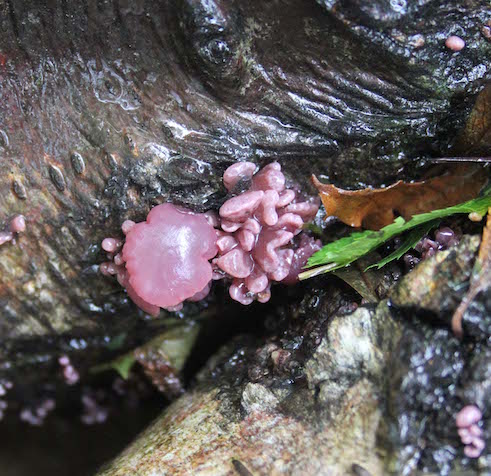
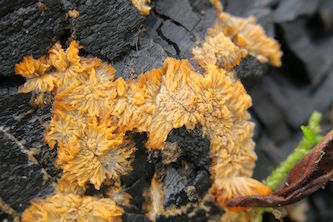
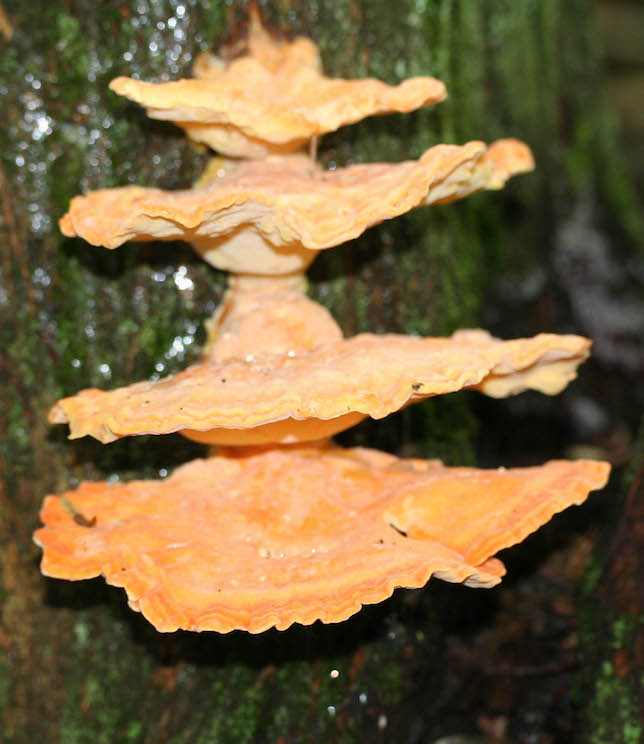
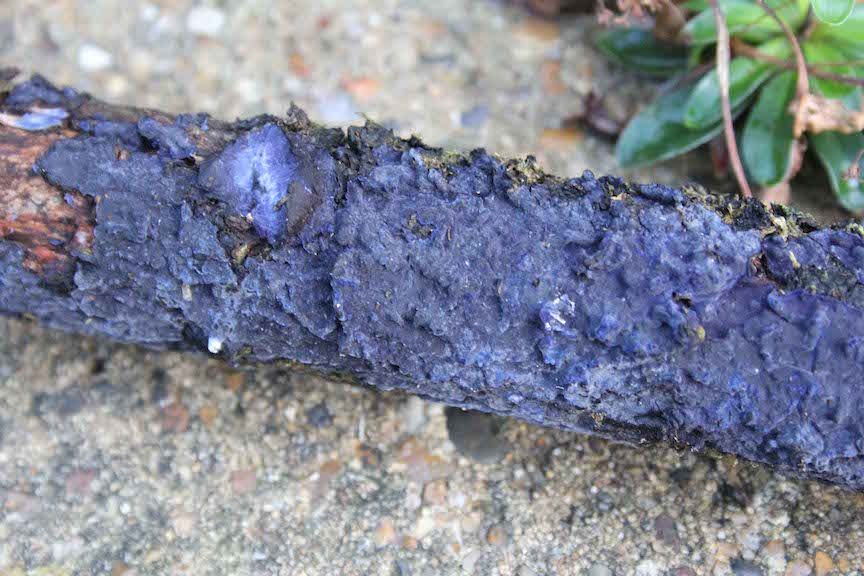
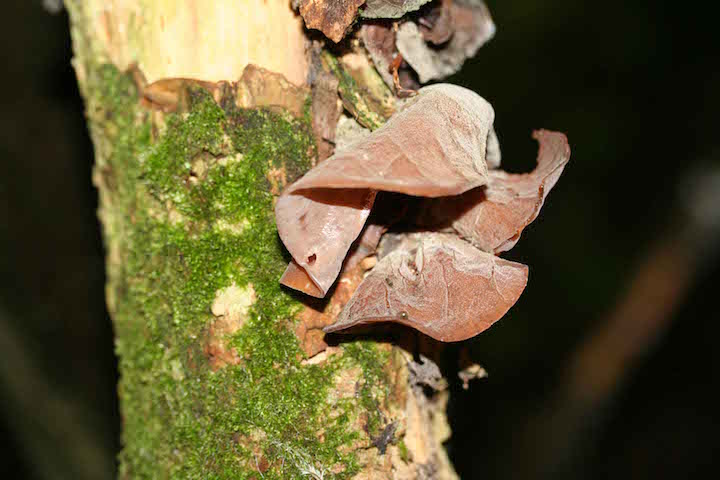
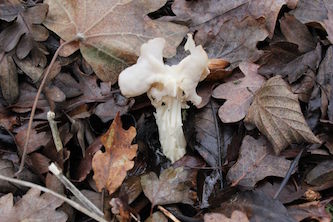
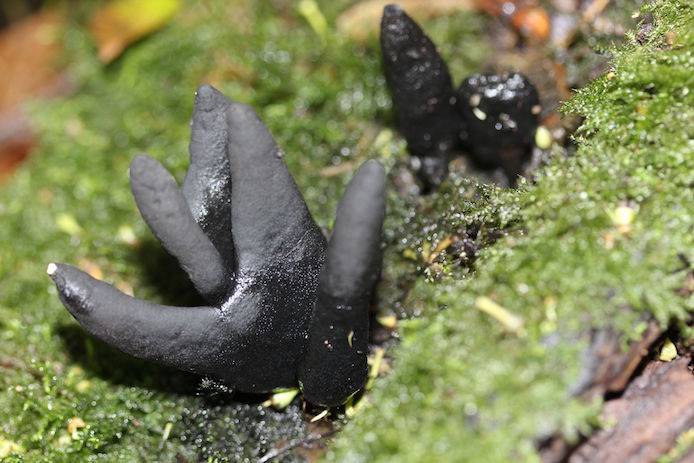
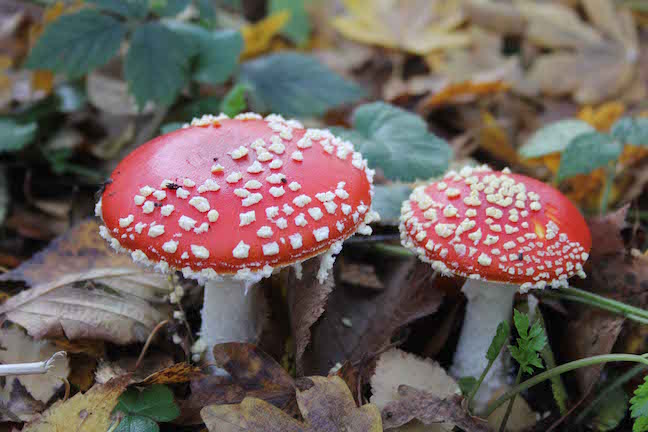
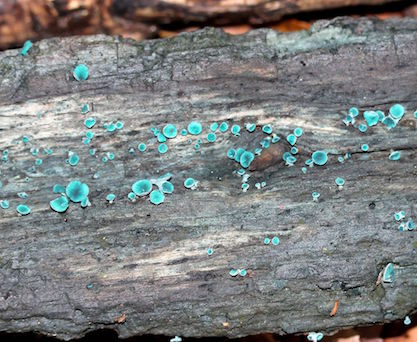
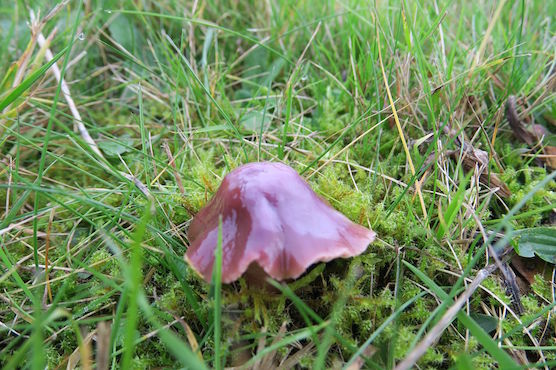
July 2017 - Plant Galls and Leaf Mines
Plant galls are one of these items which tend to be overlooked unless a search is made for them. Many are produced when a wasp or fly lays an egg in part of the plant and the secretions released by the resulting maggot disturb the growth of the plant tissues.Some bacteria and fungi also cause galls to form.
Perhaps the most obvious is the Bedegaur Gall (Robin’s Pincushion – named after Robin Goodfellow or Puck) - a reddish fuzzy ball which appears on wild rose bushes and can often be seen from a distance.
As the Oak tree supports many insects it also produces several gall species. The Knopper Gall is a very distorted acorn produced on pedunculate and sessile Oaks after the wasp responsible has had a generation on a Turkey Oak. This is one reason why foresters dislike Turkey Oaks – the distorted acorns will never grow to produce another tree.
A different insect will lay an egg in an Oak flower bud and can create an Artichoke Gall – a soft bundle of leaf-like growths rather like a miniature artichoke.
On a leaf or stalk will appear a Pea Gall – a small hard ball less than a centimetre in diameter.
Another frequent gall is the Marble Gall which is a hard, rather wooden ball around 2 or 3 cm in diameter. When crushed this can produce an ink which was used on manuscripts.
Autumn Oak leaves picked up from the ground will often have a couple of gall species. The Spangle Gall is a flat disc around half a centimetre in diameter while the Silk Button Gall, about the same size, appears to have the over-sewing typical of a decorated button. Multiple copies of both galls can appear on the same leaf.
Needle Galls are long narrow wire-like growths, up to 1 cm in length, which appear on the leaves of several species such as Field Maple and Lime. It is not unusual to see a dozen or more on one leaf and possibly accompanied by other types of gall.
Another effect produced by an insect laying an egg is seen in the various patterns caused by the resulting maggot as it eats the material between the top and bottom surface of a leaf. These leaf mines are so distinctive that the insect involved can often be identified from the characteristics of the maggot’s track through the leaf and the presence and distribution of droppings (frass). The mine can be an irregular tunnel which wanders across the leaf or it might form a roughly circular blotch. When the egg first hatches, the maggot is tiny and the track that it begins to make is narrow. As the maggot grows the track becomes wider, stopping when the maggot completes this part of its life cycle and emerges as the adult insect. Over 600 species of moths, beetles, flies, sawflies and wasps produce mines with each insect concentrating on a few host plants. Leaf Mines are easy to find on Hawthorn, Bramble and Hogweed but do not expect them to be on every leaf – you will have to look for them. On Bramble the culprit is probably a micro moth called Stigmella aurella which, like a lot of these tiny insects, has no common name. The most obvious blotch mine is that produced by the Horse Chestnut Leaf Miner moth. Each leaf tends to have several mines and the effect on the tree is to make it look as though autumn has come early. To attempt to find an identity for the producer of a particular leaf mine it is probably best to make use of the internet. Search for “leaf mines” and use the identity of the plant to help narrow the search.
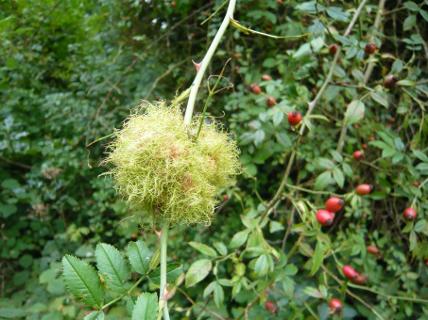
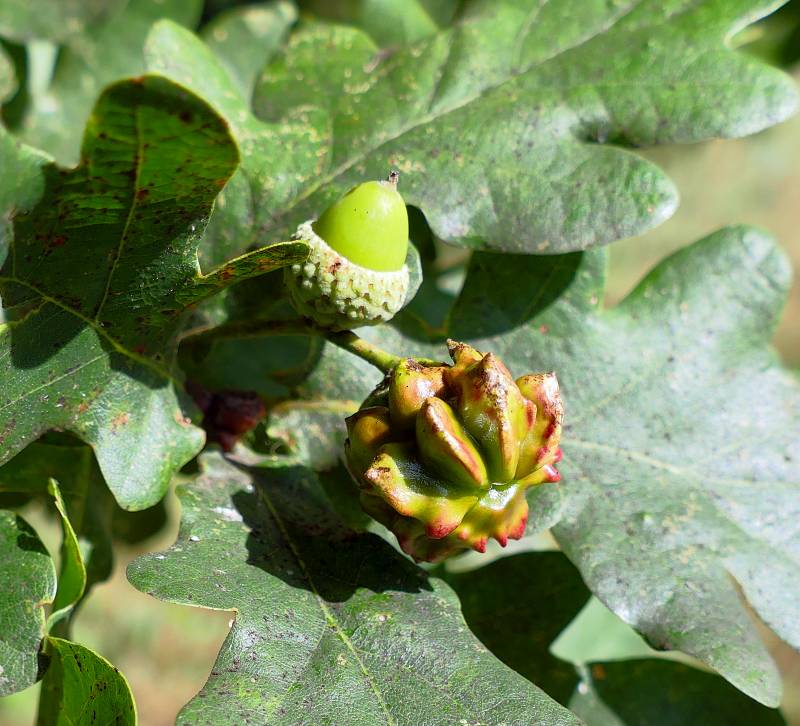
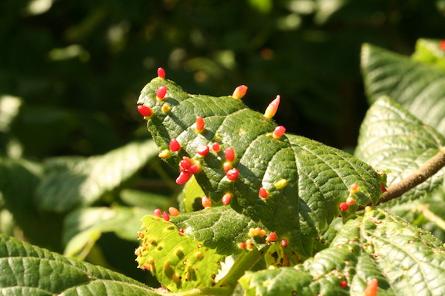
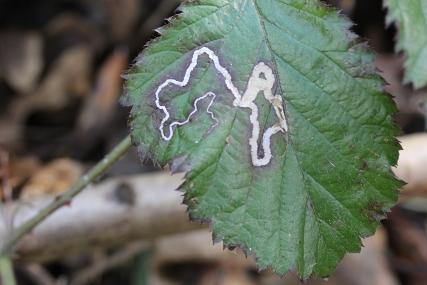
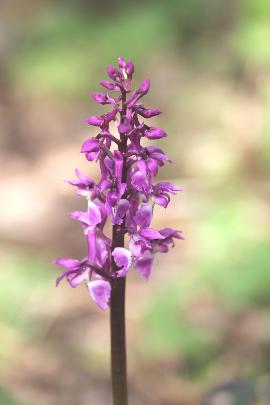
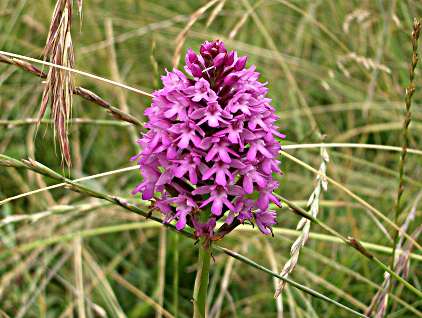
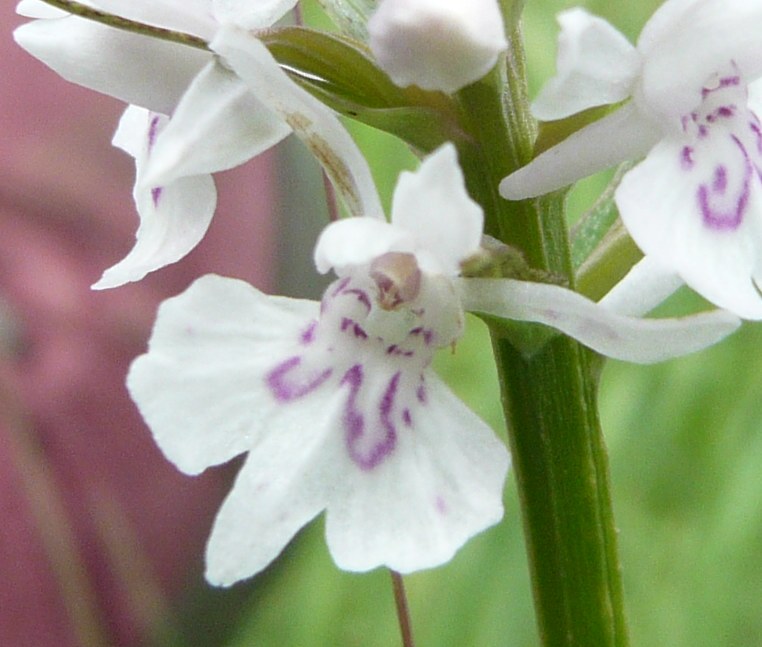
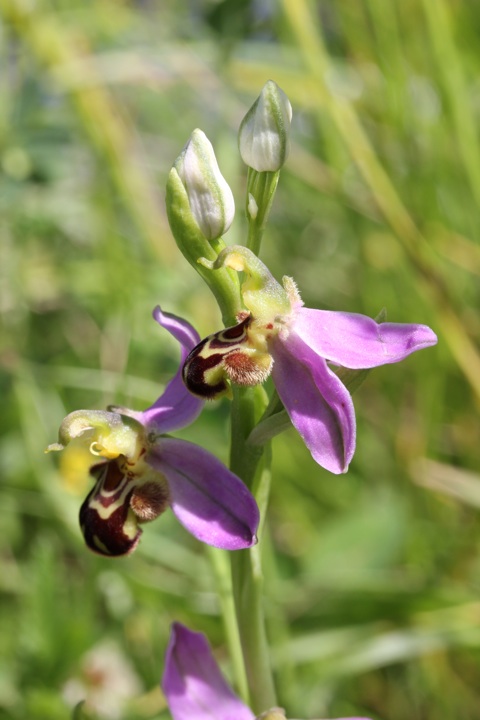
June 2017 - Orchids
British orchids may not be as flashy as tropical orchids but they have their own kind of beauty. In Selsdon Wood, Early Purple orchids are the earliest orchids to appear and will be in flower in May and June. Some of the other species might flower in June but most are more likely in July. Pyramidal orchids are the most visible, with a large number usually in the car park field, but there is usually a scatter in most of the other fields. In Great Field a few Common Spotted orchids grow in the centre of the field so might tend to be partly hidden by the grasses. Bee orchid is very variable as it tends to die after flowering and new plants will take a long time to come from seed. White Helleborine is again variable but has appeared in large numbers in the Centenary Plantation and in one or two places nearby. Broad-leaved Helleborine has produced a single plant in several years outside the Centenary Plantation but it sometimes vanishes, perhaps eaten by slugs or deer.
Without going too far from Selsdon it is possible to find other orchid species. The Chapel Bank reserve near the White Bear in Featherbed Lane can produce up to ten species. Common Twayblade, as its name suggests, has two leaves from which it sends up a rather insignificant green flower shoot. Scattered Pyramidal and Common Spotted orchid can be found in different parts of the reserve. Where a rather obvious buried pipeline crosses the reserve an occasional Bee orchid can be found and in a nearby clump of trees both Violet and Broad-leaved Helleborines grow. Behind the nearby fence a clump of Early Purple orchids put on a show while along the path leading to the end of the reserve the relatively rare Man orchid sometimes occurs though a larger number is more likely in the “set-aside” field at the end of the reserve. Coming back to the entrance, there is a track known as Orchid Avenue where in a good year we can find Greater Butterfly orchids, Broad-leaved-, Violet-, and White Helleborines.
On Farthing Downs, walking down from the car park to the nearby woodland leads to a path with runs to the left. Along this shady path can be found a number of the small Fly orchid, and on the slopes down from the path are Common Twayblade, Pyramidal, Fragrant, Bee and Man orchids.
Riddlesdown has a lot of Pyramidal orchids but at the end farthest from the car park, under the trees and by the side of the path can be found a few Green-flowered (or Pendulous) orchids.
Lizard and Fragrant orchids occur on a bank in the centre of the golf course at Lullingstone Country Park, and there is often a large number of Dark Green Fritillary butterflies.
The reserve at Howell Hill has Early Spider, Bee, Fragrant and other orchids.
Some of the reserves in Kent have Monkey orchid, Lady orchid, Burnt orchid and Green-winged orchid.
Several years ago, Bird’s Nest orchid was said to have grown in Selsdon Wood but it has not been found recently. It tends to appear near Beech trees and is greenish when it starts growing but soon turns brownish and remains like that for many months, even into the nest season. A visit to Box Hill or Denbies hillside might find this species. On Box Hill above the upper slopes of the zig-zag road in the short turf there are usually Musk orchids.
Another site worth visiting is High Elms in Bromley. It is best visited from the second car park from which it is necessary to follow the woodland path in an anti-clockwise sense to find the orchid bank in the middle of the wood. Fly, Bee, Greater Butterfly orchids and White Helleborines occur and in the woodland below the bank it is possible to find Broad-leaved and Violet Helleborines.
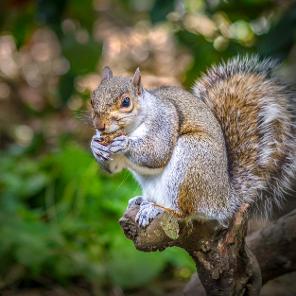
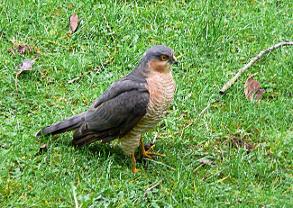
May 2017 - Predators
Mention the word predator to someone and you might get a reference to some alien monster from a film. Alternatively, you might get as examples lions, tigers, polar bears, wolves, etc. However, if you think about the wildlife in an area such as Selsdon Wood you will realise that it is full of prey and predators. The largest denizens are foxes and badgers, both of which will snack upon items ranging from hedgehog and mice to earthworms and beetles. An occasional weasel will take voles, mice and birds. Voles, mice and shrews eat earthworms, beetles, and moth pupae but will also be interested in blackberries. Grey squirrels will certainly eat nuts when they are available but will not turn up their noses at a nest of young birds, mice, etc. The Great Spotted Woodpecker is notorious for destroying thin-walled nest boxes to get at the contents. The Green Woodpecker feeds mainly on ants. Song Thrush will smash open a snail shell to get at the meat and Glow-worm larvae also make a meal of snail. Some slugs are carnivorous and will eat other slugs.
Amongst trees and bushes aphids are eaten by ladybirds and by small birds. Parasitic flies and wasps lay their eggs in caterpillars and the larvae feast on the meat before emerging later as adults. Many nestling birds will be fed on caterpillars even when as adults some will eat seeds or flower buds.
There are predators in the air. Kestrels take voles and beetles from the ground after spotting them while hovering. Sparrowhawks go after small birds but the larger female can catch birds as large as a woodpigeon. Buzzards will take carrion but will walk on the ground to look for earthworms. Tawny Owls have a varied diet including mice, voles, shrews, beetles, birds and frogs where available. Swifts and Martins trawl the air for flying insects, sometimes at very great heights. Pipistrelle Bats at dusk will be after moths and other night-flying insects but some moths have learned to detect the bat echo-location calls and take evasive action.
Earthworms are the prey for many species including the underground Mole and ground-feeding birds such as the Blackbird. Caterpillars are essential food for nesting birds and with climate change any alteration in the timing of caterpillar abundance can have a major effect on the successful breeding of birds, particularly the summer migrants who may arrive too late.
As Ogden Nash says
“Big fleas have little fleas upon their backs to bite ‘em,
And little fleas have lesser fleas and so ad infinitum”!
We have a jungle on our doorstep!
April 2017 - Hole Nesters
The quintessential hole nesters are the woodpeckers as they excavate their own nest holes in suitable trees. Most trees that are chosen are likely to have some signs of decay but this is not essential. Various kinds of tree are used and the tree trunk or branch in which the hole is placed obviously has to be large enough to take the hole. The two smaller woodpeckers will often use a Birch tree, digging a new hole each year and leaving a collection of old holes one above another. Sometimes a Birch Polypore fungus will appear above a nest hole and act as a weather and sun shield. Great Spotted Woodpecker is the most common and can be found in most wooded areas. Lesser Spotted Woodpecker is now an unlikely nester locally though it has nested in Selsdon Wood, Littleheath, Kings Wood, Rowdown Wood and elsewhere. The larger Green Woodpecker tends to build its nest hole in trees which are close to open areas where it will feed on the ground.
Another bird which makes its own nest cavity is the Willow Tit but this has long vanished locally. Its relative, the Marsh Tit, can be found locally in small numbers but makes use of an existing hole to make its nest, as do most of the other Tits. I have seen a Blue Tit nest in a vertical metal pole and have wondered how the young birds survived in the cramped conditions and how they managed to clamber out. Coal Tit nest close to the ground, often amongst the roots of a tree but sometimes in a hole left by a small mammal such as a Vole. Long-tailed Tit is an exception as it creates a nest in the form of a hollow ball decorated with moss, wool and feathers which is flexible enough to accommodate a growing family.
Nuthatch will take over a hole and will use mud to plaster the entrance until it is reduced to an acceptable dimension. Treecreeper prefers to squeeze into a crevice, perhaps behind a loose piece of bark, and often has an entrance and an exit.
Tawny Owl will occupy a hollow tree if available, or even a large nest box, but in the absence of these it will take over an abandoned nest of Carrion Crow or Sparrowhawk and will lay the eggs directly on the material that is present without actually building a nest. Kestrels, like the Tawny Owl, will build on an old Carrion Crow nest but will adopt hollows in trees or large branches, and will build on man-made structures and in nest boxes.
Jackdaws may choose a hollow tree but are just as likely to nest on buildings, as are Starlings. Swifts are restricted to gaps under the eaves of buildings but will sometimes adopt a suitable nest box. Sand Martins nest in holes near water and in some reserves they are provided with a wall of artificial nest holes which they seem happy to take over. The raucous Ring-necked Parakeet is unable to dig its own nest hole so has to take over an existing hole and can be seen investigating suitable sites in late winter and probably squabbling with other species which are doing the same. Tree Sparrows are hole nesters which used to breed in Selsdon Wood but they have now vanished from the area.
In the competition for holes in trees Squirrels often have first choice. A tree with a rotting heart might provide a roosting place for Bats which can enter through even a tiny entrance hole.
There are other hole nesters which do not appear locally, such as Barn Owl and Redstart, but Little Owl nests not far from Selsdon Wood and we are hopeful that we might entice a pair to nest on the edges of the wood one day.
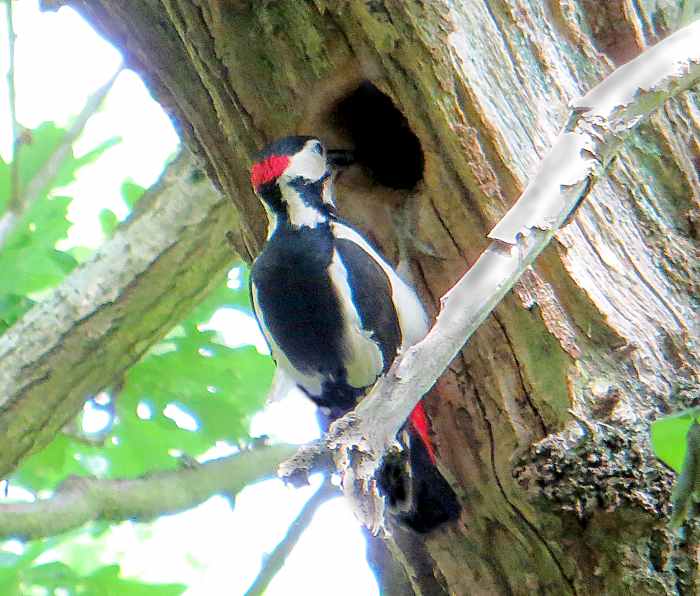
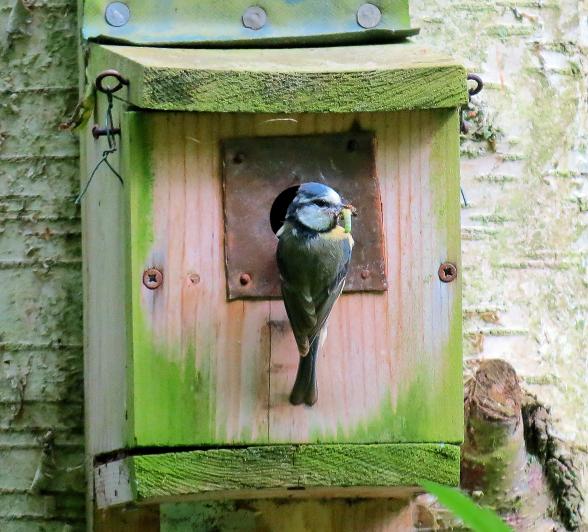
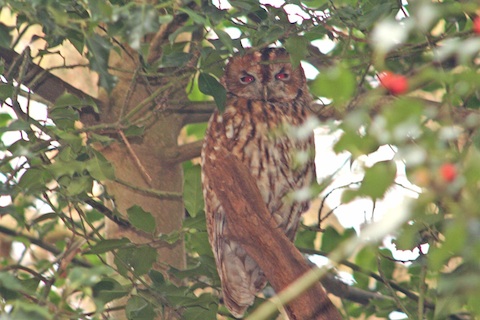
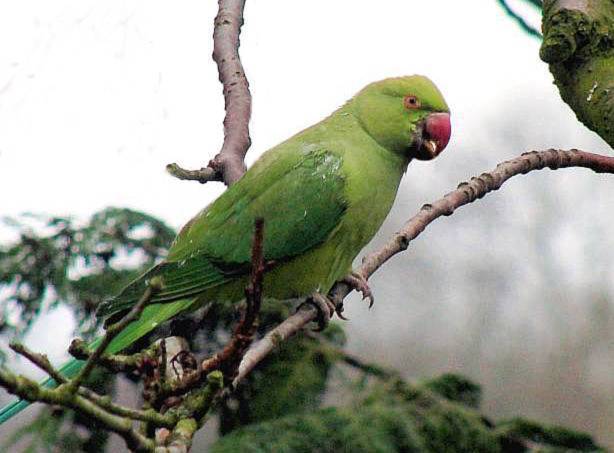
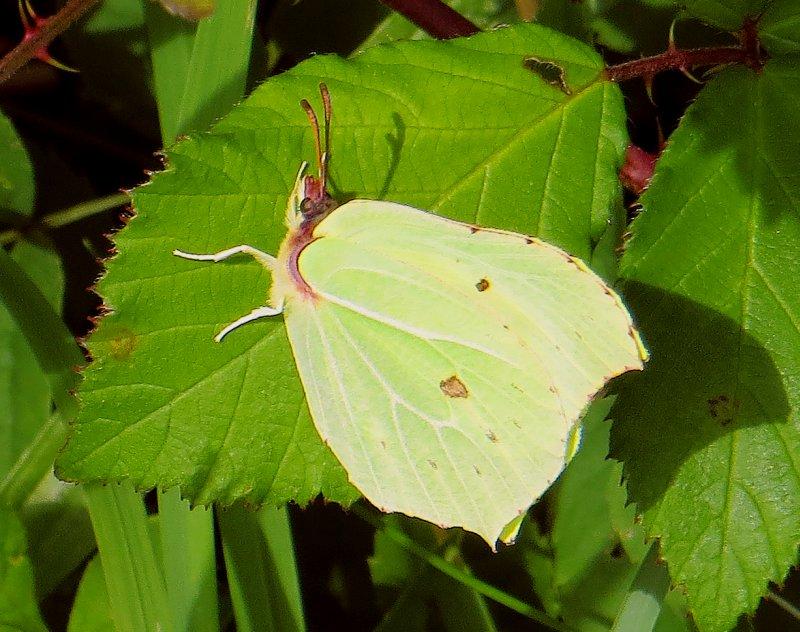
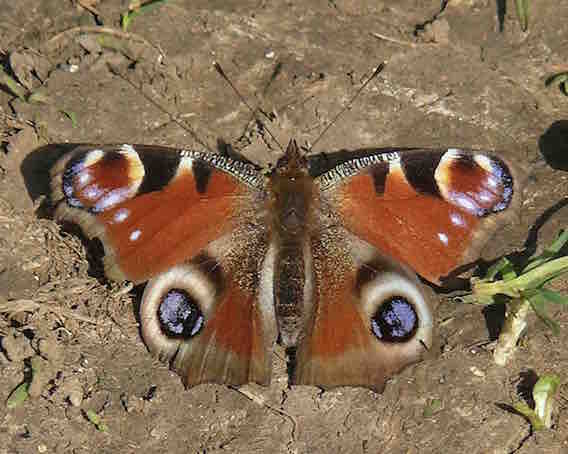
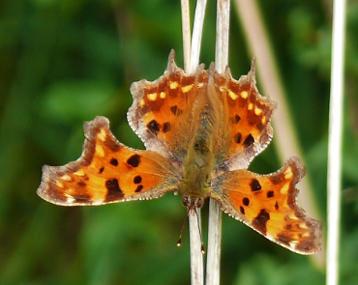
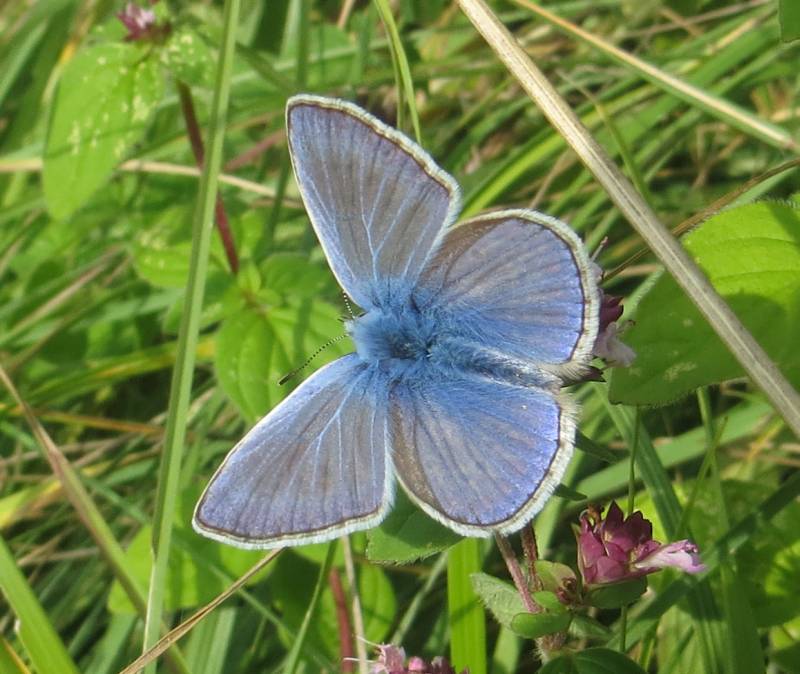
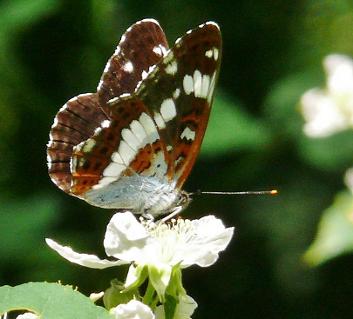
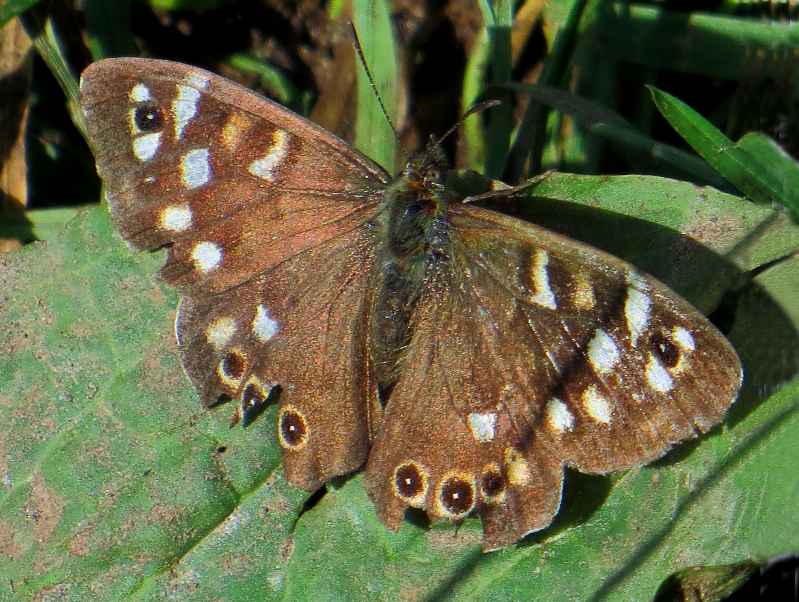
March 2017 - The Butterfly Year
During warm days in the early part of the year butterflies which have been hibernating can occasionally be seen fluttering around. Members of the Butterfly Conservation Society were reporting in the first week of 2017 sightings of Peacock, Small Tortoiseshell, Red Admiral and even Painted Lady! This does not mean that you are likely to see any of these species immediately after your New Year celebrations – it will normally be a few months before butterflies are on the wing in any numbers.
Let us start in April. The hibernators – Brimstone, Peacock, Small Tortoiseshell and Comma – are the most likely to be seen and to some extent will be visible for the remainder of the year. Red Admiral is not numerous at this time. Later in the month the spring specialists appear, particularly Orange Tip and Green Hairstreak but possibly Grizzled and Dingy Skippers – this is your best chance of seeing some of these species. Green Hairstreak frequently perches on hedges while Orange Tip looks for females visiting garlic mustard flowers, and the two Skippers are often found sunning themselves on bare patches of soil.
Many species are flying in May with the peak time at the end of the month and if weather conditions permit there may be an immigration of Painted Ladies.
Activity builds up in June and it is a good time to look for Small Heath butterflies. Large and Small Skippers begin to emerge and there may be some Ringlets and Marbled Whites. While we do not have Small Blue in Selsdon Wood – it needs kidney vetch as food plant for the caterpillars – there are large colonies nearby. Hutchinson’s Bank Reserve in Featherbed Lane has lots of the food plant and in good summers has one of the largest groups of Small Blue. An even bigger colony exists near Frith Wood – follow the bridleway from Featherbed Lane and as you reach the end of Frith Wood look to the left on the golf course where there is a large patch of kidney vetch. More than 50 Small Blue have been recorded here.
If there is one month when butterfly activity is obvious it is July. Many of the species already mentioned will be in flight but they are joined by most of the remainder of our butterfly list. The most numerous of the grassland butterflies is probably the Meadow Brown but there can be some confusion in trying to separate the identification of flying Ringlets from male Meadow Browns. In the woodland White Admiral in small numbers, and the slightly more numerous Silver Washed Fritillary can be found visiting bramble flowers or buddleia – they will also venture out to these flowers on the edges of the fields. Purple Hairstreak occurs in the wood but is seldom recorded because of its habit of remaining at the top of oak trees for most of the day. Apart from spending time peering at the top of a tree looking for movement, the recommended way to find them is to wait until around 6.30pm on a warm evening when there is more activity and the butterflies tend to descend to lower levels. White Hairstreak needs elm trees of which there are a few dotted around the edges of the paths in the wood but the butterfly has not recently been recorded here. Holly Blue uses both holly and ivy so is more likely to be seen in the woodland. Green-veined White, Small White and Large White peak at this time. Small Copper might be seen but is more common later. Gatekeepers will be found on bramble and marjoram and fluttering around bushes. Commas and Red Admiral appear now though they might have been seen earlier in the year.
Common Blues will visit birdsfoot trefoil in late May but are more likely in August as are migrant Clouded Yellows and Painted Ladies. Small Heaths produce a second brood with adults in flight in August. Brown Hairstreaks will emerge now but the adults spend most of their time at the tops of “master” trees, usually one of the tallest trees and the females will fly off to lay their eggs on blackthorn bushes. In winter it is possible to record the presence of this butterfly by finding eggs and this has been done in Selsdon Wood, though so far the adult butterfly has not been seen.
I have not mentioned the Speckled Wood butterfly which is found on the woodland path edges. As it passes through the winter either as a caterpillar or a chrysalis the spring emergence occurs in two peaks. Caterpillars will have to eat, form a chrysalis then emerge while those already in chrysalis form have a head start. With two broods producing eggs and progressing to adults there can be an abundance of flying adults in August.
By September most butterflies have dwindled to small numbers but this can be the best time to search out Small Coppers on marjoram, possibly joined by Brown Argus, Common Blue, Gatekeeper and Meadow Brown.
Day length and temperature have an effect on the development of caterpillars and pupae. Early and late broods of Speckled Wood produce butterflies of differing size. The effect on Comma is to produce individuals which are brighter and more yellowish in the early broods but a darker version later.
The suggested times given above correspond to the rough peak times but butterflies will appear both before and after these times.
February 2017 - Winter Trees & Fungi
There are several general terms applied to descriptions of trees. There are conifers and broad-leaved trees. Conifers bear cones which carry their seed but also have leaves in the shape of narrow needles which are retained throughout the winter months. Larch is an exception – though it has needles and bears cones, the needles lose their ability to make chlorophyll during the winter, with many of the needles falling off as the tree goes into a dormant state until spring returns. The fruits of Yew are berries rather than cones but it does have needle-like leaves which it retains. Alder is a broad-leaved tree but it produces cones.
A second categorisation divides trees and bushes into evergreens and deciduous. Evergreens retain their green colour in the leaves or needles, so this eliminates Larch but includes Holly and Laurel. The deciduous group stops supplying nutrients to the leaves in autumn so the leaves drop off and the tree or bush remains bare through the colder months. Most of the trees in the wood fall into this latter category – Oak, Ash, Field Maple, Sycamore, Sweet Chestnut, Horse Chestnut, Hornbeam, Hawthorn, Blackthorn, etc. Oaks and Chestnuts will drop their fruits in the autumn but trees and bushes which produce berries will keep them until they are eaten by wildlife. Ash and Hornbeam retain bunches of “keys” for many months.
A third possibility, perhaps more useful when considering using the timber for joinery or construction, is to divide the trees into hardwoods and softwoods. Most conifers fall into the softwood group and tend to grow relatively rapidly on rather shallow root systems so that in extremely windy conditions many will topple over. Most of the non-conifer trees are hardwoods but there is quite a variation in the properties of the timbers.
Whilst identifying trees is easiest when the leaves are still present, winter is a time when we must look for other clues. A mature Sweet Chestnut has bark in which the ridges tend to grow in a spiral around the trunk. However, there is a fallen tree in Smith Grove which is still growing by sending up new vertical stems which are smooth and with no sign of ridges at all. Young saplings do not look like the mature tree. A young Ash tree has a smooth silvery-grey bark and retains this appearance as it grows for many years but a really mature specimen has a deeply ridged bark and frequently supports a collection of lumpy cankerous growths which are quite distinctive. A mature Field Maple will carry a crop of its winged seeds and the ground underneath will be littered with them and this is a tree which seems to attract lichen and this helps when trying to make an identification. Wild Cherry has distinctive corky bands around the trunk and these are frequently still visible on a fallen trunk.
There are some fungi which grow on particular species of tree. King Alfred’s Cakes (Cramp Balls) grow on fallen Ash branches and logs, allowing identification of both the fungus and the tree. This might help if there are other unidentified fungi on the same log. Rotting tree stumps produce lots of fungi some of which are characteristic of conifers – Yellow Stagshorn for example, but fungi like Artists’ Bracket can appear on Oaks and conifers. A fallen Silver Birch is usually recognisable by its whitish bark and quite possibly by a collection of Birch Polypores on the trunk.
The real challenge occurs when an unknown fungus is found on a small fallen branch or twig. In this case additional information which might help comes from surrounding trees and the leaves on the ground. In the first two weeks of January 2017 many fungi were found usually growing on logs, fallen branches and twigs.
See the FSW website http://www.friendsofselsdonwood.co.uk for much more information about the trees and fungi found in Selsdon Wood.
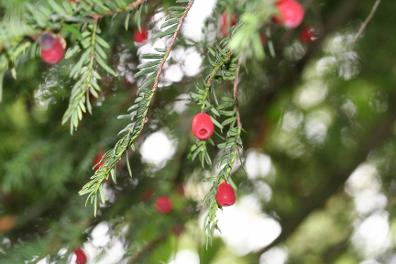
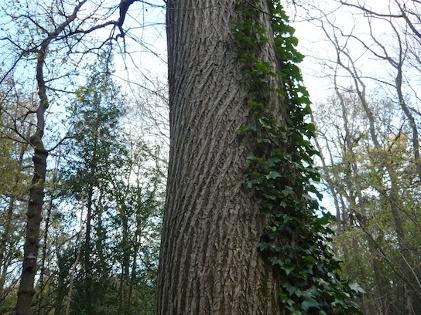
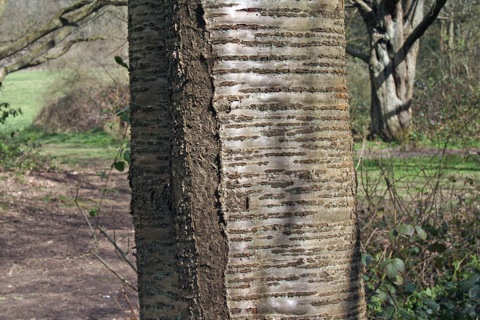
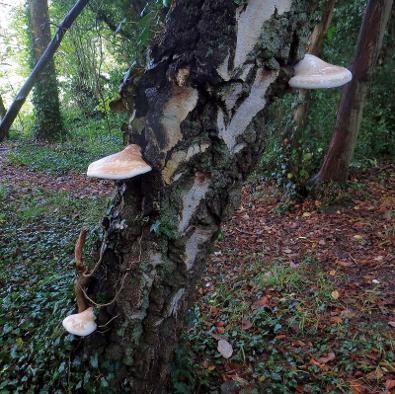
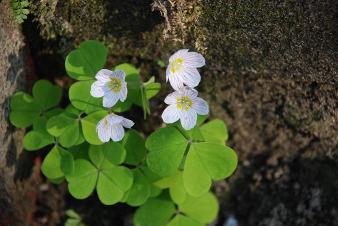
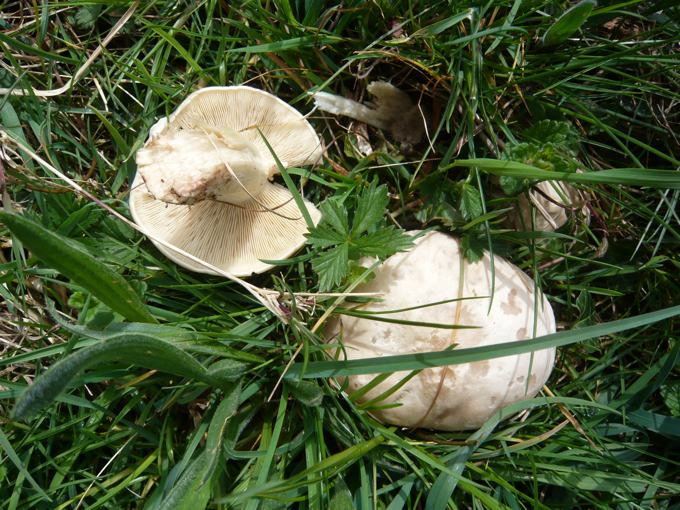
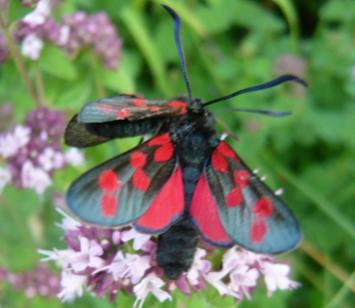

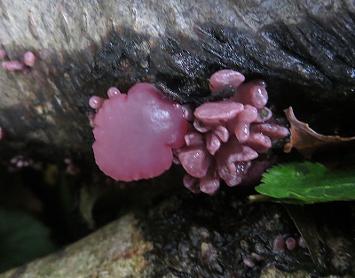
January 2017 - A Nature Calendar
January-February-March
The mating season for foxes probably started in December. Listen for the call of the dog fox “how, how, how” and the wailing scream of the vixen. Tawny Owls can be heard as they set up or defend their winter territories. Great Spotted Woodpeckers drum frequently to mark territories and to attract mates. Winter Thrushes, Redwings and Fieldfares, feed on berries and can be seen in the field by Farleigh Border if the ground is soft enough, when they can find earthworms or invertebrates. Finch flocks, including Redpolls, Siskins and Goldfinches look for food on Birches, Larches and Alders but will also feed on the ground under trees or amongst vegetation where they can find seeds. Tits will gather in mixed flocks which might include Nuthatches, Treecreepers, Goldcrests and Great Spotted Woodpeckers. Woodland in winter can appear to be devoid of birdlife until you meet one of these flocks.
There are a few fungi which seem to prefer colder conditions, such as the Scarlet Elfcup and Velvet Shank.
April-May-June
While some incoming migrant birds will begin to appear in March numbers really start to increase in this period. Swallows, Martins and Ring Ousel are in the vanguard but are quickly followed by Chiffchaffs, Blackcaps, Garden Warblers and all the other summer migrants, with peak numbers of individuals and species in May. Even exotic species like Golden Oriole have made a brief stop in the wood – listen for the characteristic fluty warble. Listen for the spring song of the Nuthatch – a prolonged rapid warble rather than the usual “twit, twit, twit” call. Early butterflies will probably be insects coming out of winter hibernation – Red Admiral, Peacock, Comma, Small Tortoiseshell, Brimstone followed by Orange Tips. May and June bring out more butterfly species. Early flowering plants include the yellow Lesser Celandine, Bluebells and the two white-flowered species Wood Anemone and Wood Sorrel, one with a serrated leaf and the other a shamrock or clover type leaf.
St George’s Mushrooms usually appear in April, supposedly near St George’s Day – 23rd April. Blackthorn blossom covers the bushes and is followed by the appearance of Hawthorn blossom.
Grass Vetchling looks like a typical grass until it flowers, producing a bright magenta-coloured flower at the top of the stem. Early Purple orchids are in flower in the woods. Badgers, Foxes and Roe Deer produce their young. Chicken of the Woods and Dryads’ Saddle fungi appear on tree stumps and trunks.
July-August-September
Many young birds will be out of the nests. Look for feeding family parties of Great Spotted Woodpeckers. Crossbills can turn up on Larch trees in July. Red Kite and Buzzard drift over the wood and there are occasional visits from species such as Hobby and Honey Buzzard. Slime moulds appear on grasses or on fallen tree trunks. Beetles, spiders and hoverflies visit tall plants like Hogweed and Cow Parsley. Burnet Companion and Mother Shipton moths fly by day amongst the grasses and 6-spot Burnet moths perch on Scabious flowers. Migrant Humming-bird Hawkmoth, Painted Ladies and Clouded Yellows appear on warm winds from the south. Orchids are in flower in the fields – magenta coloured flowers of Pyramidal orchids being the most obvious, but there are a few Common Spotted orchids and occasional Bee orchids. Compare acorns and leaves on Sessile-, Pedunculate- and Turkey-Oaks. Crickets and Grasshoppers are active – Oak Bush Cricket, Speckled Bush Cricket, Roesel’s Bush Cricket on bushes and various grasshoppers amongst grasses – perhaps best found using a bat detector or by using a young pair of ears. The black and yellow striped abdomen of the Wasp Spider can sometimes be found as it hangs from its web between grass stems. Butterfly numbers reach their maximum in July, with most of the species on the wing. Swallows and Swifts will be making their return migration as they aim for southern climes.
Fungi can be found throughout the year but most appear at this time – Earthballs, Yellow Stagshorn, Chicken of the Woods, Hen of the Woods. Purple Jellydisc, Yellow Brain, White Brain, Crystal Brain, Turkeytail and many others.
October-November-December
Waxcap fungi appear around this time with eight or nine species in David’s Crook and Great Field in a good year. Goldcrests, Firecrests. Woodcock and Gt Grey Shrike all enter this country and may take up temporary residence in the local area. Hawfinch occasionally arrive in the wood, usually singly, and will disappear just as quickly. Winter finch flocks and winter thrushes return. Sweet Chestnuts, Sloes, Bullace, Mirabelle Plums, Elder Berries and Rose Hips adorn their respective bushes and trees, but be wary when the chestnuts and acorns are falling from the trees. Look for the colourful orange and pink fruits of the Spindle bush. Foxes will be making a lot of noise as the mating season begins.
Plenty to look out for throughout the year in our beautiful Selsdon Wood!